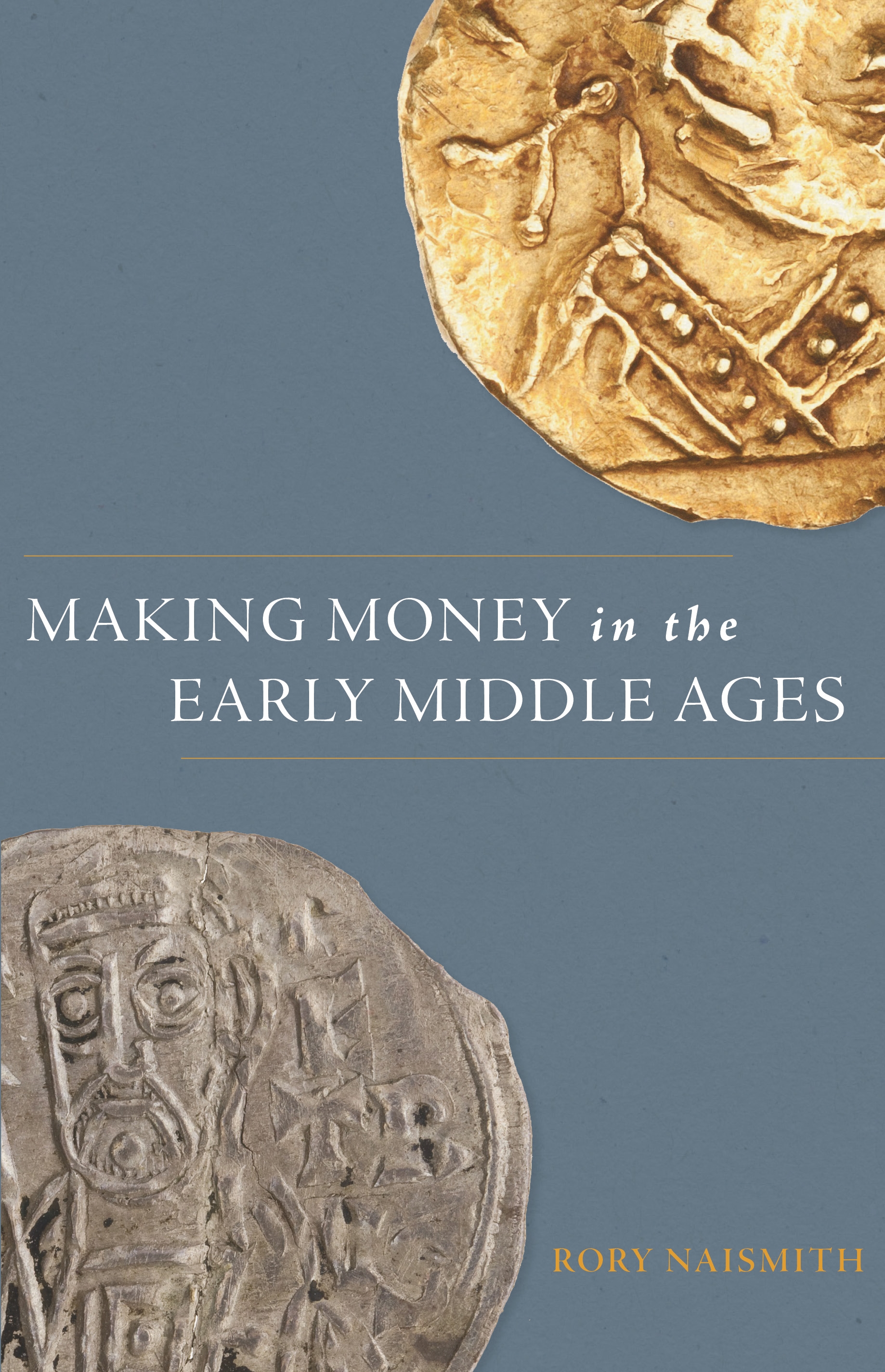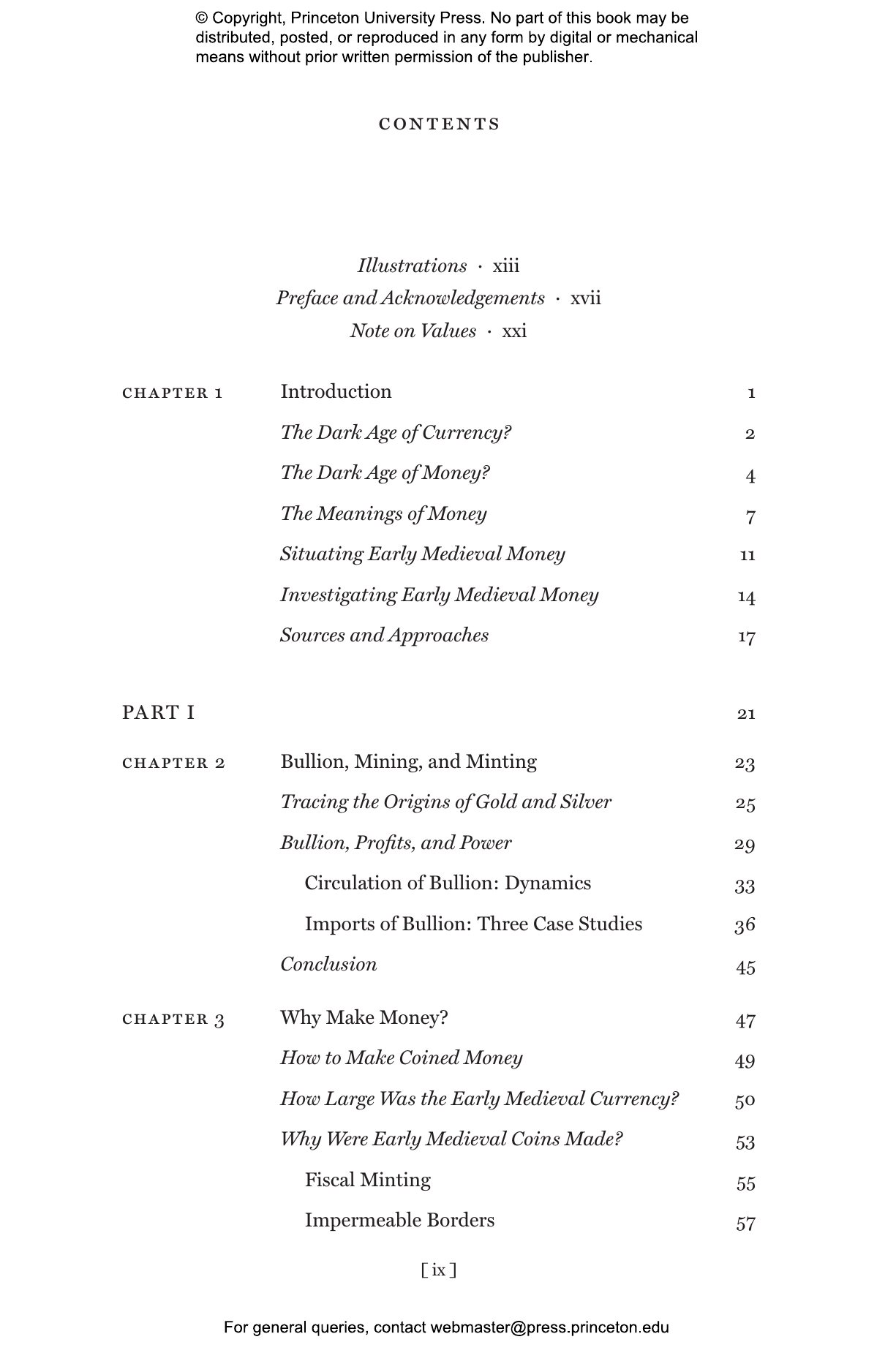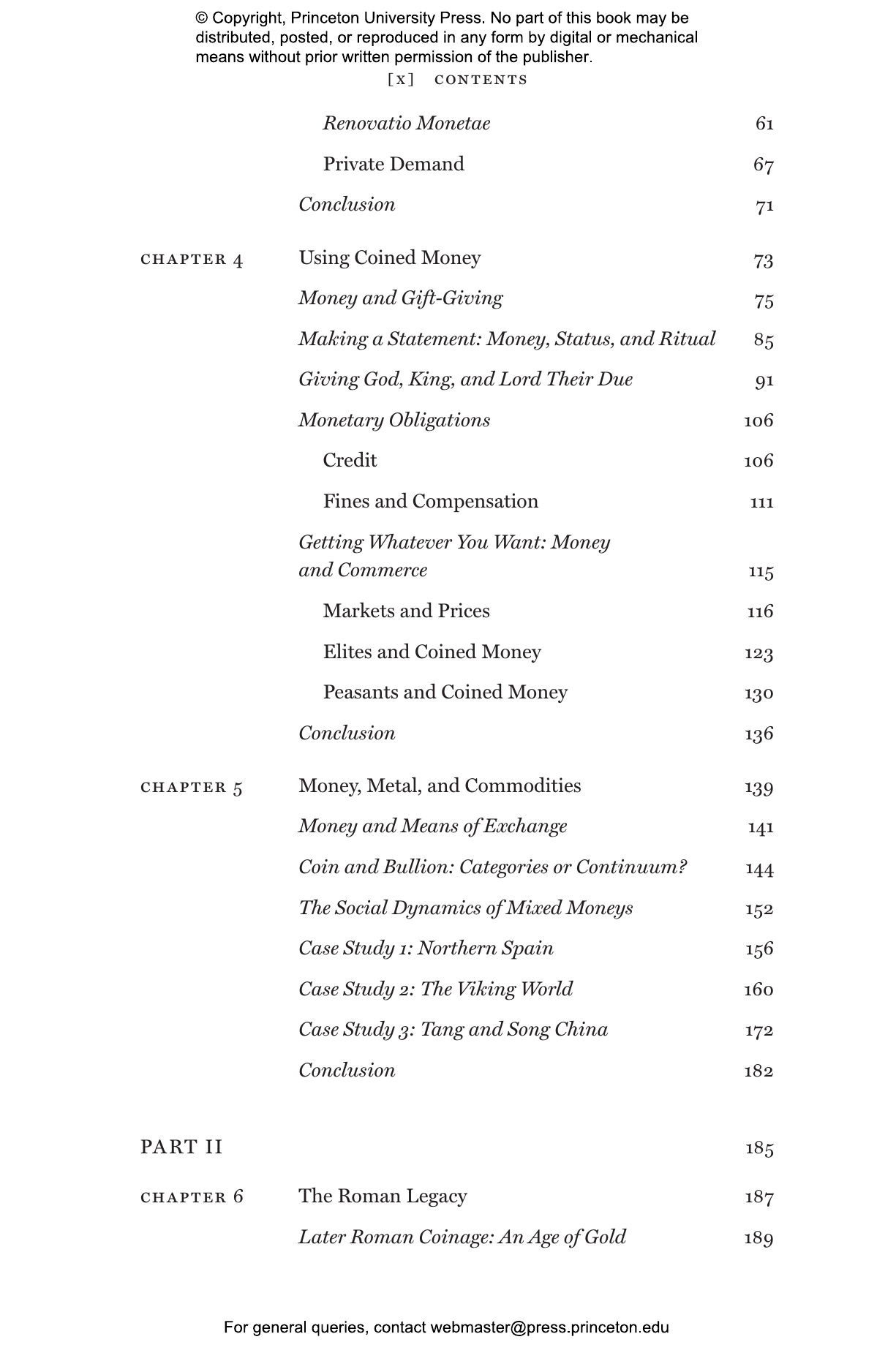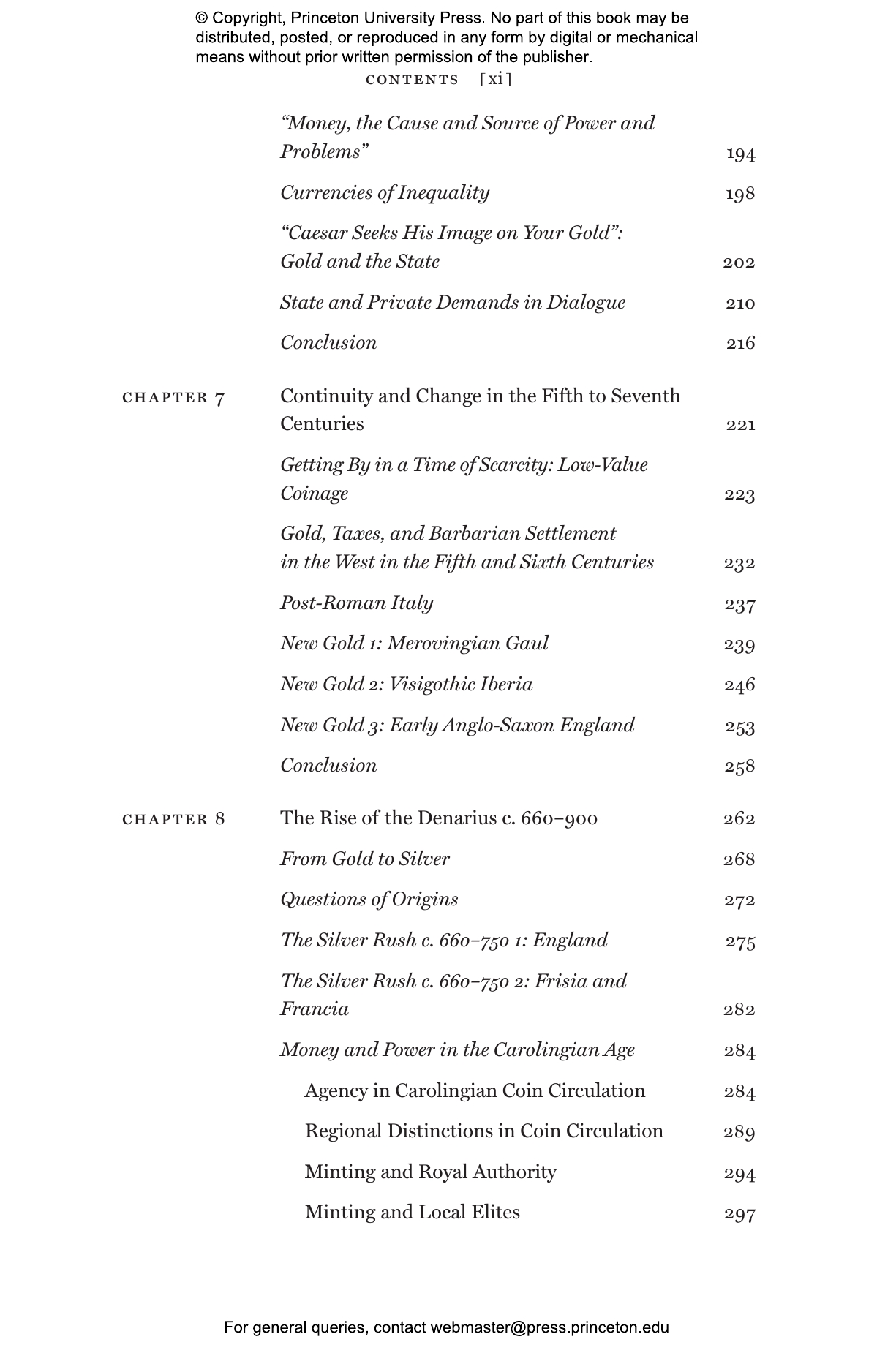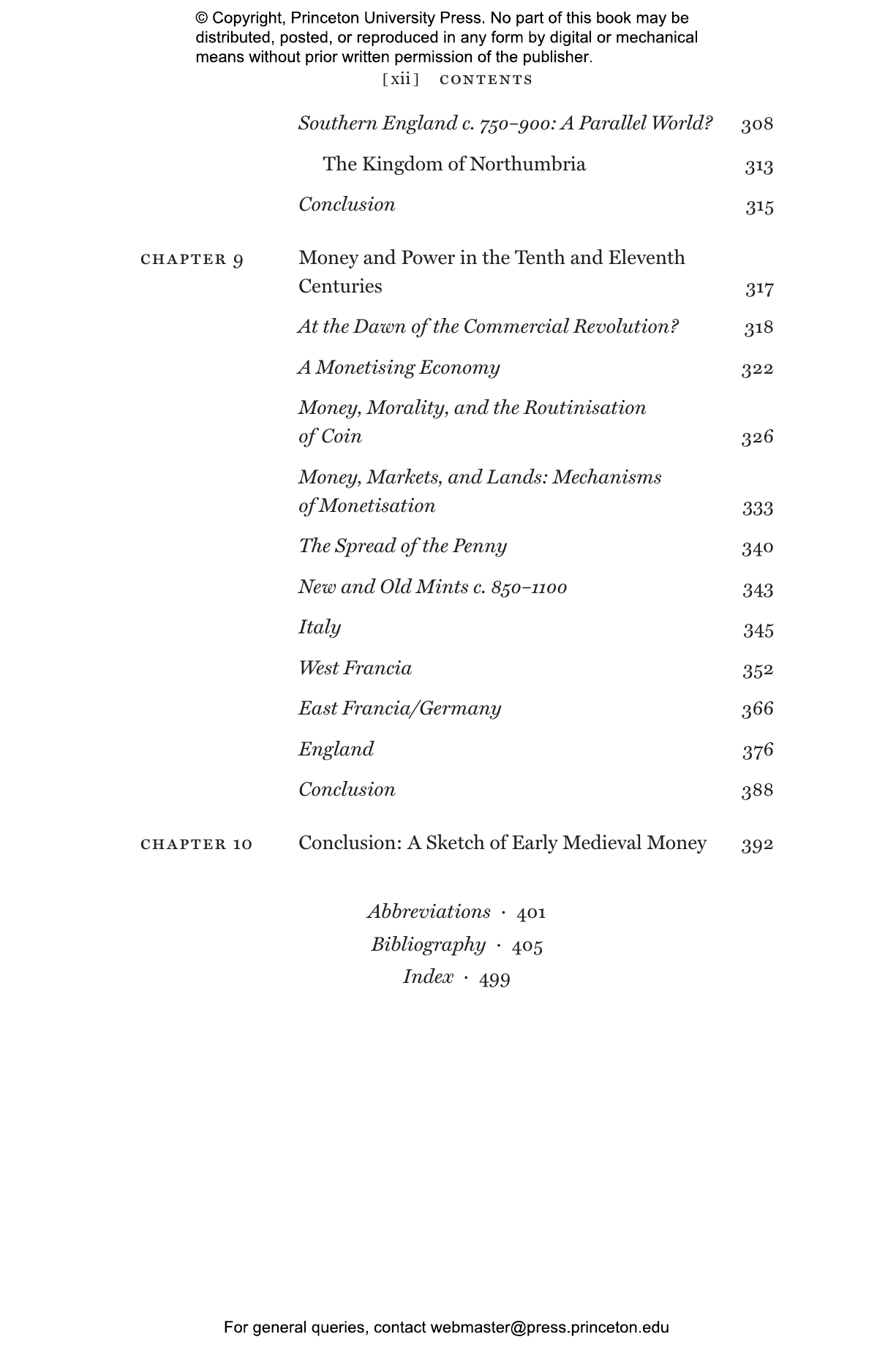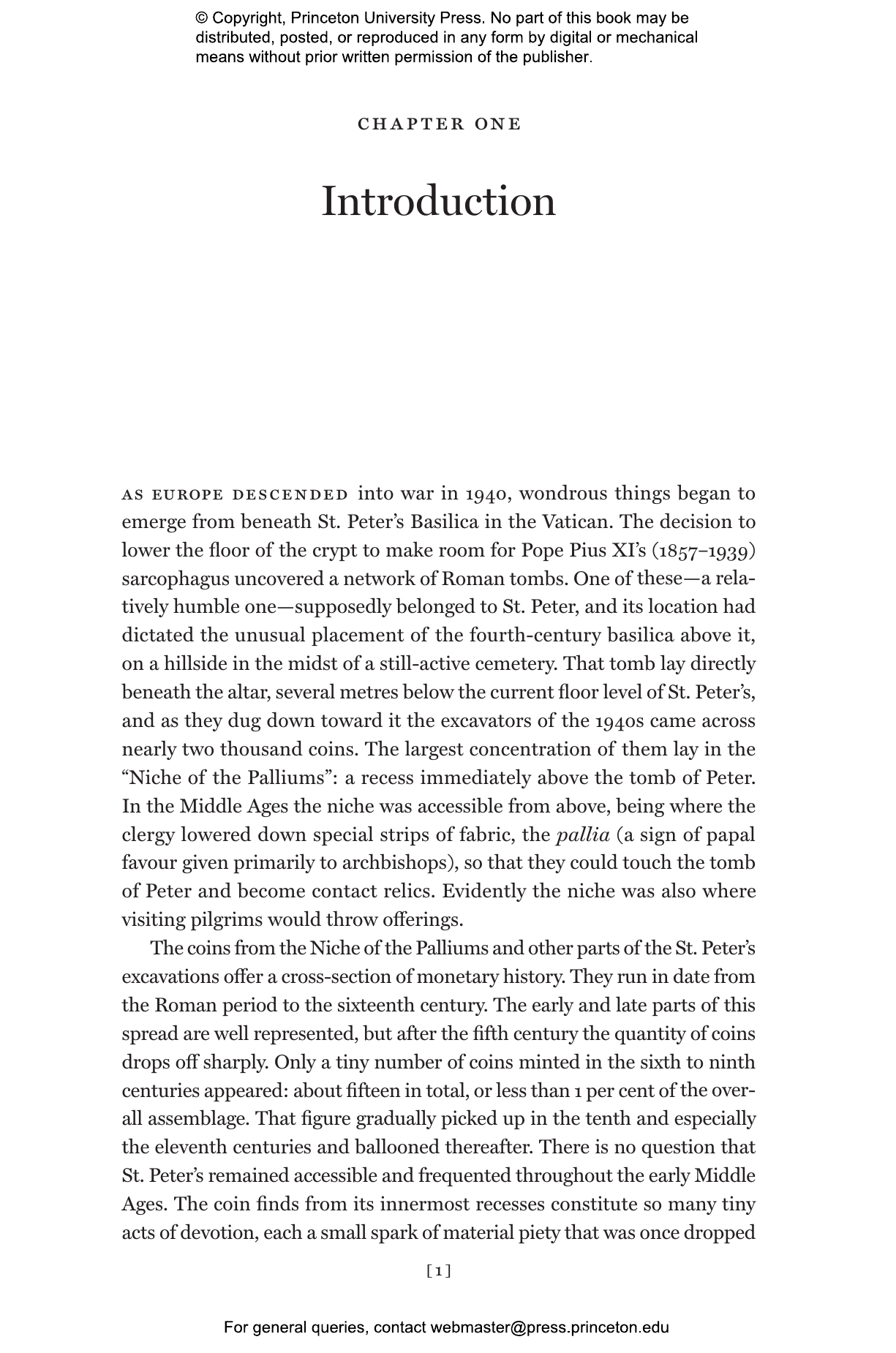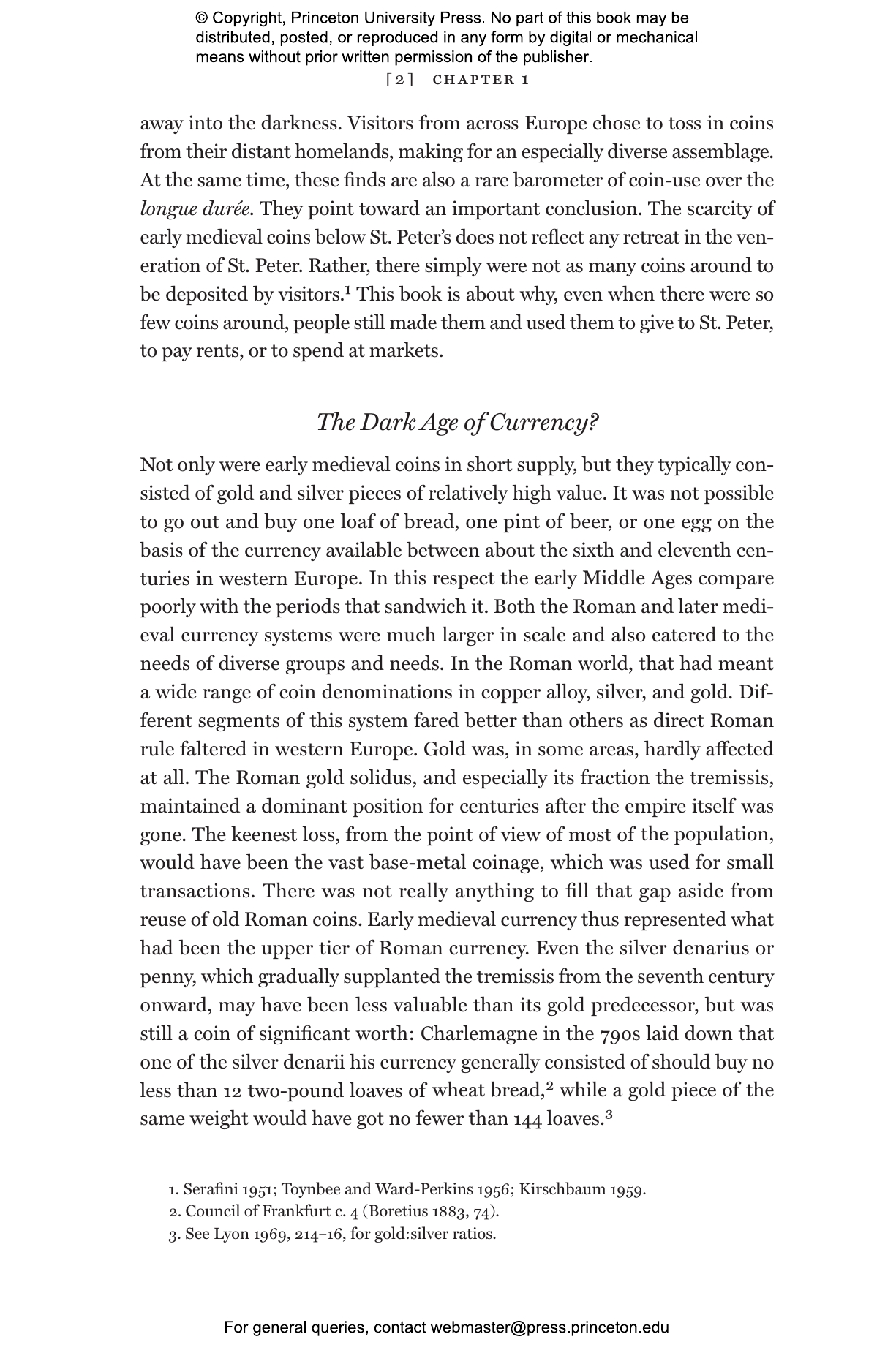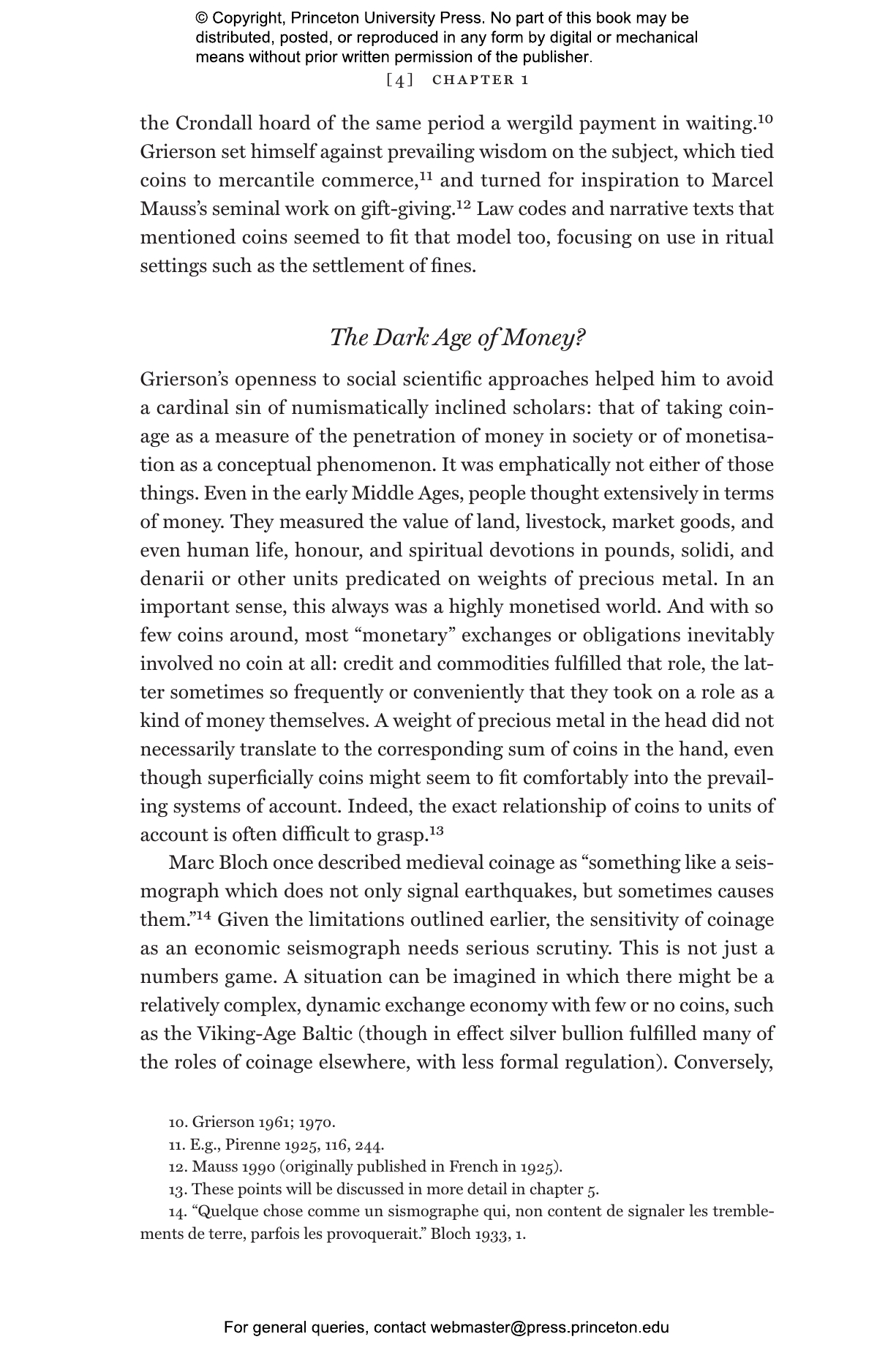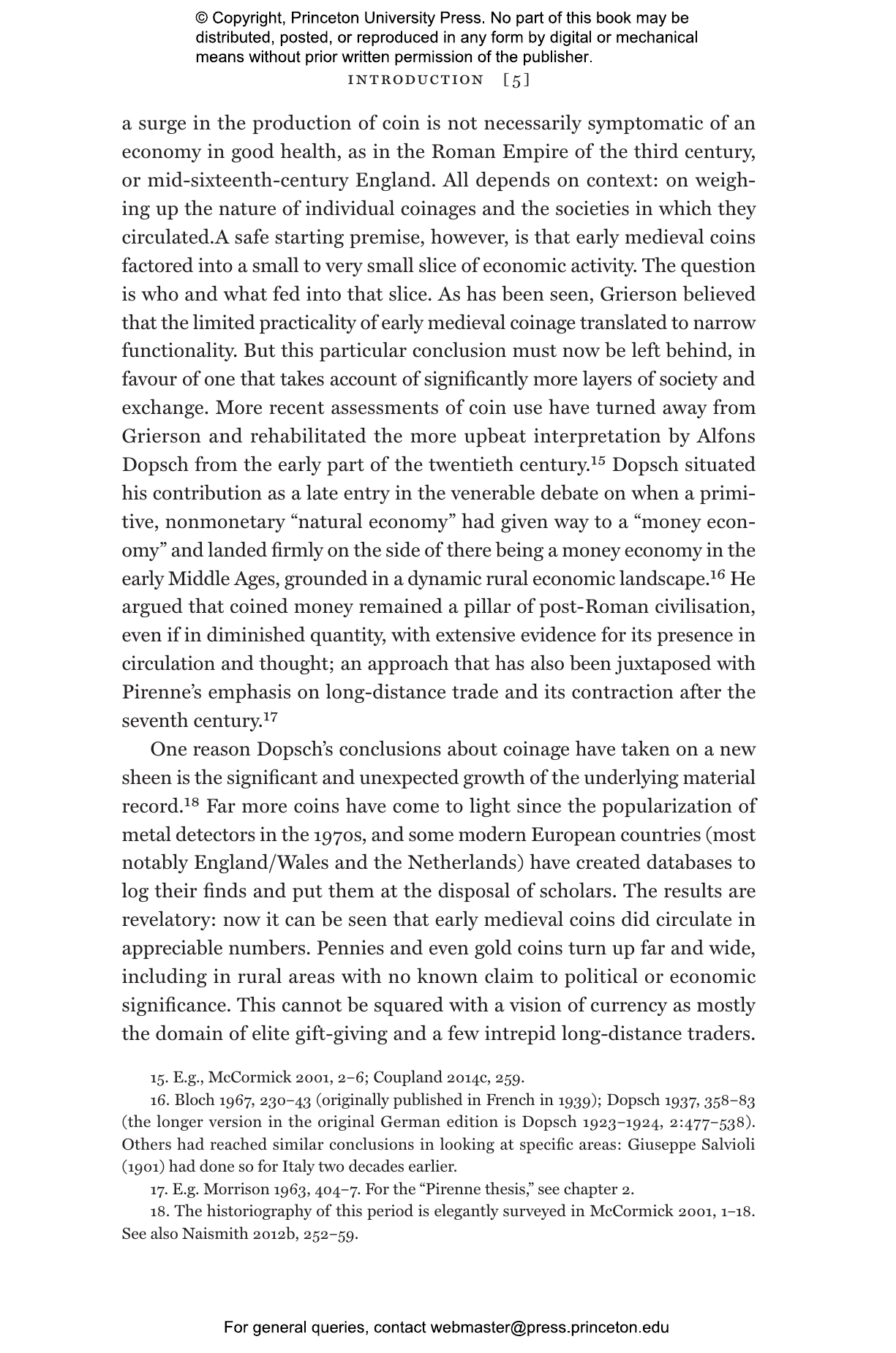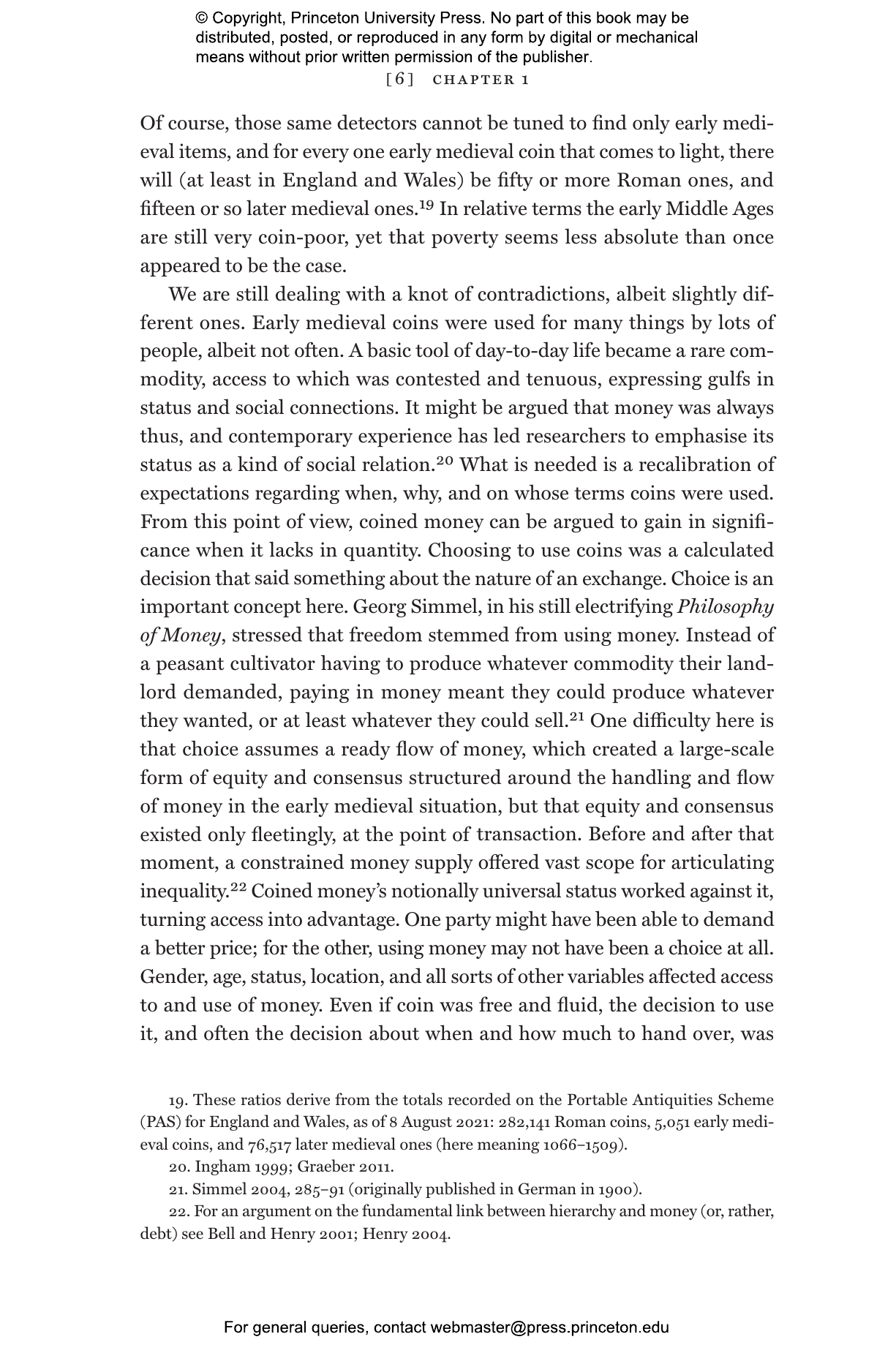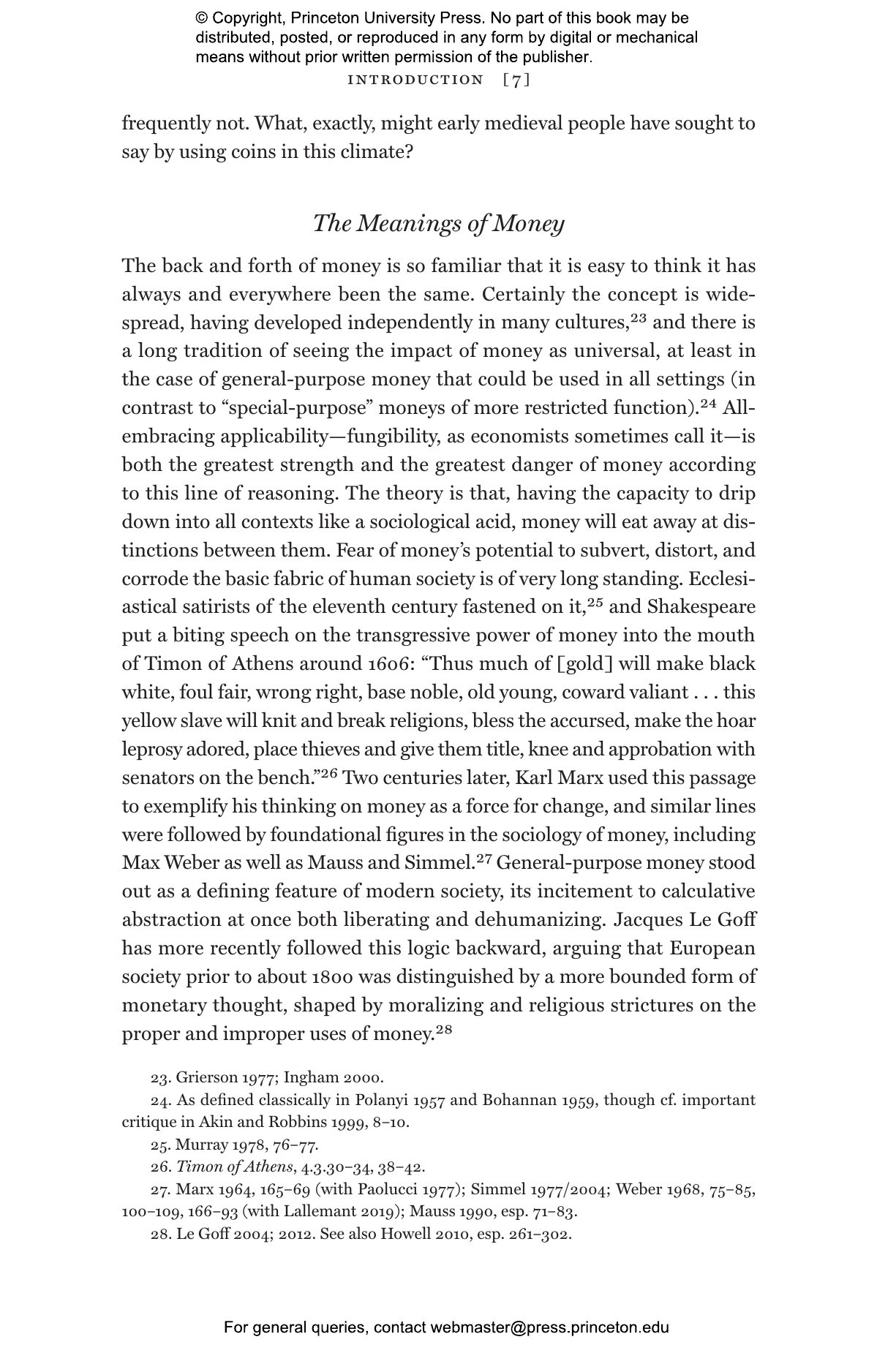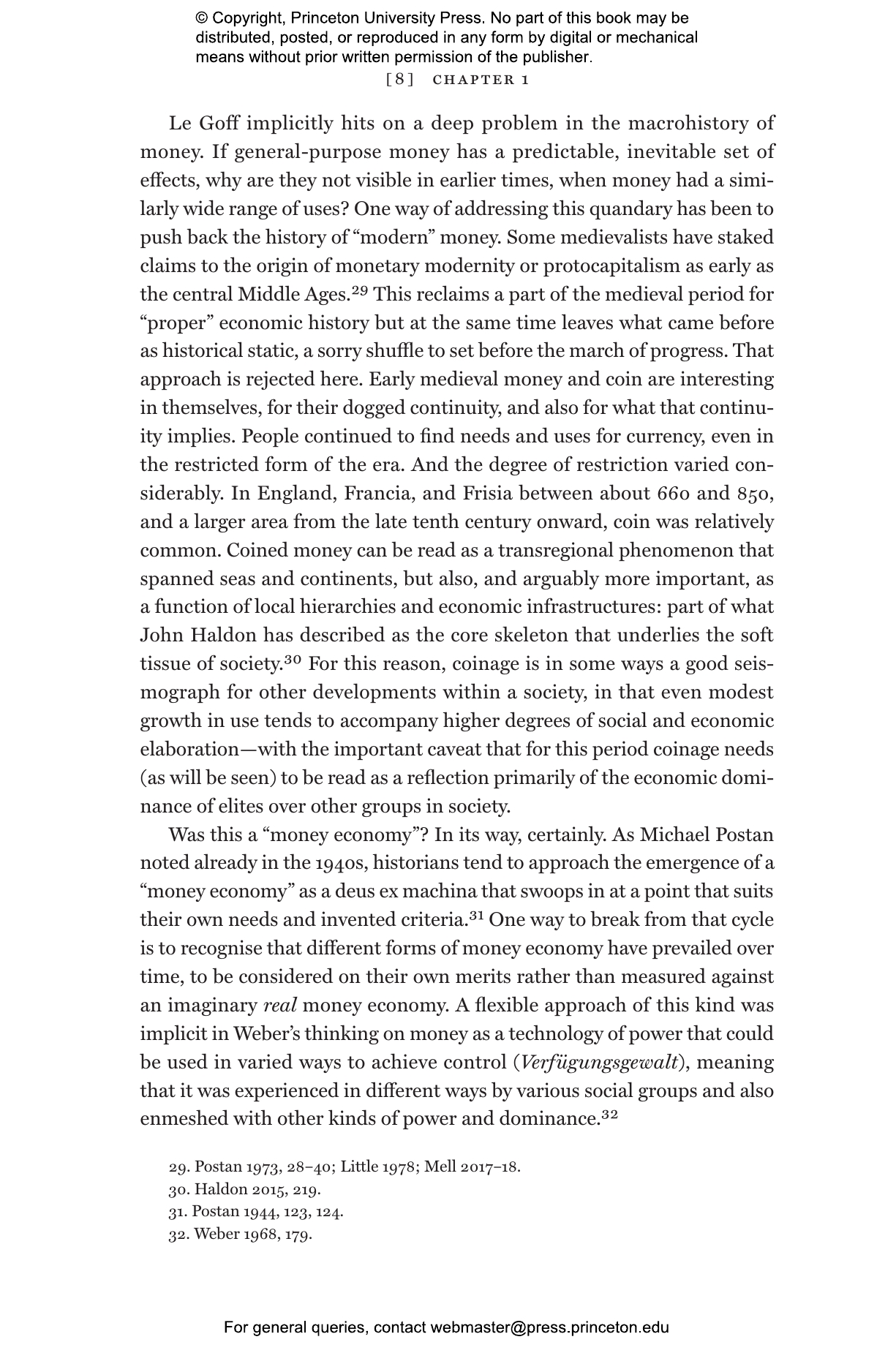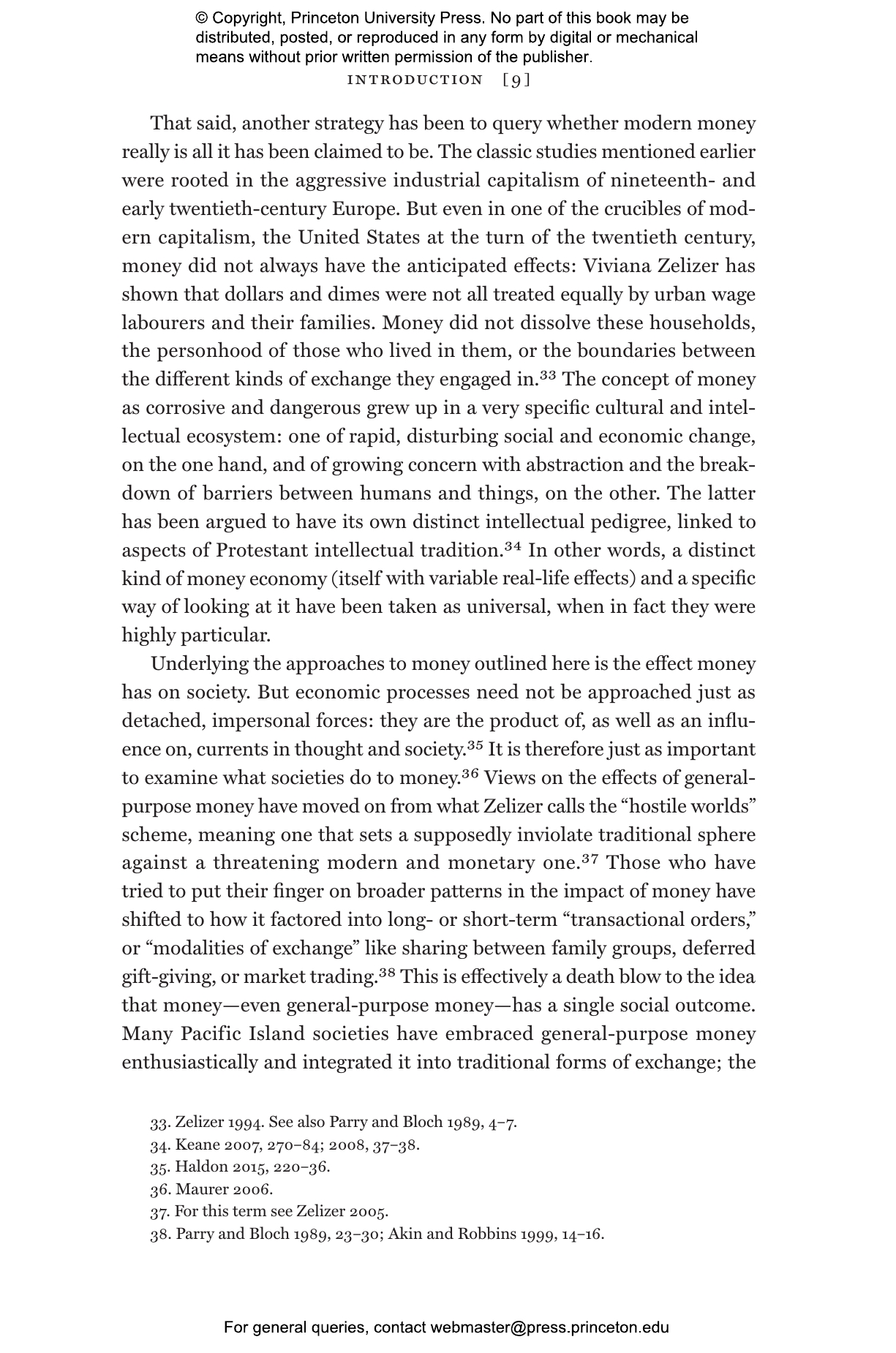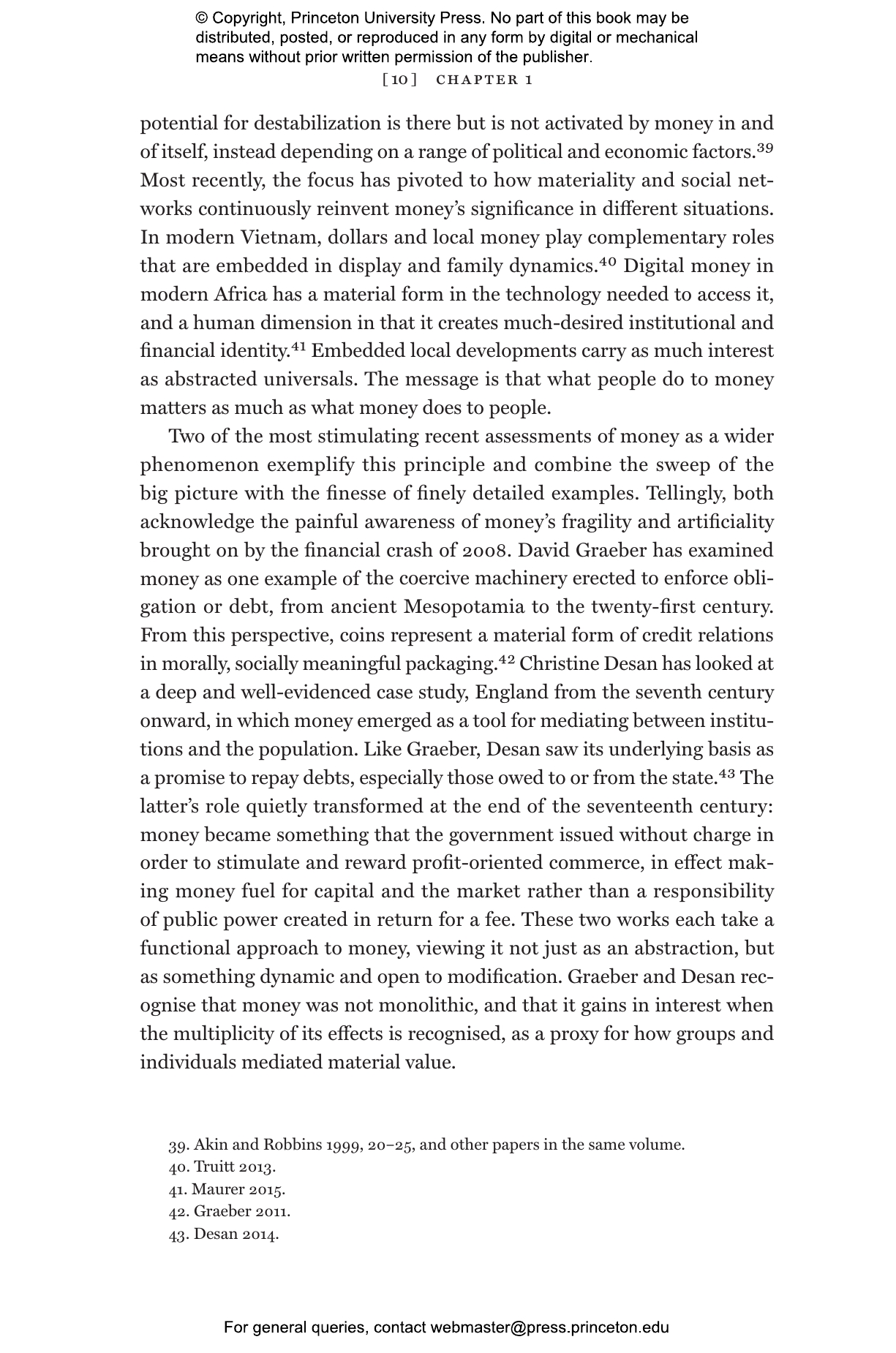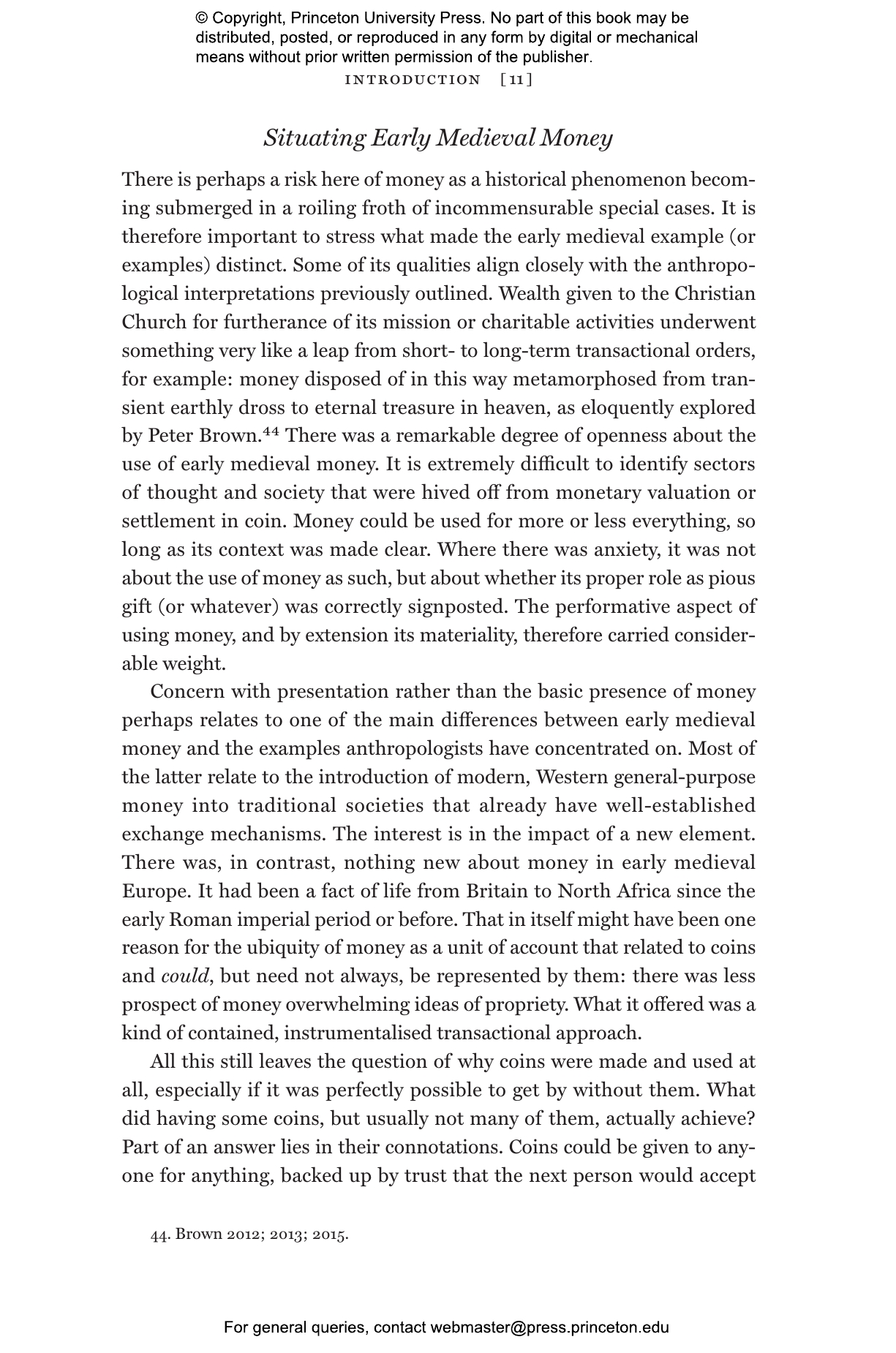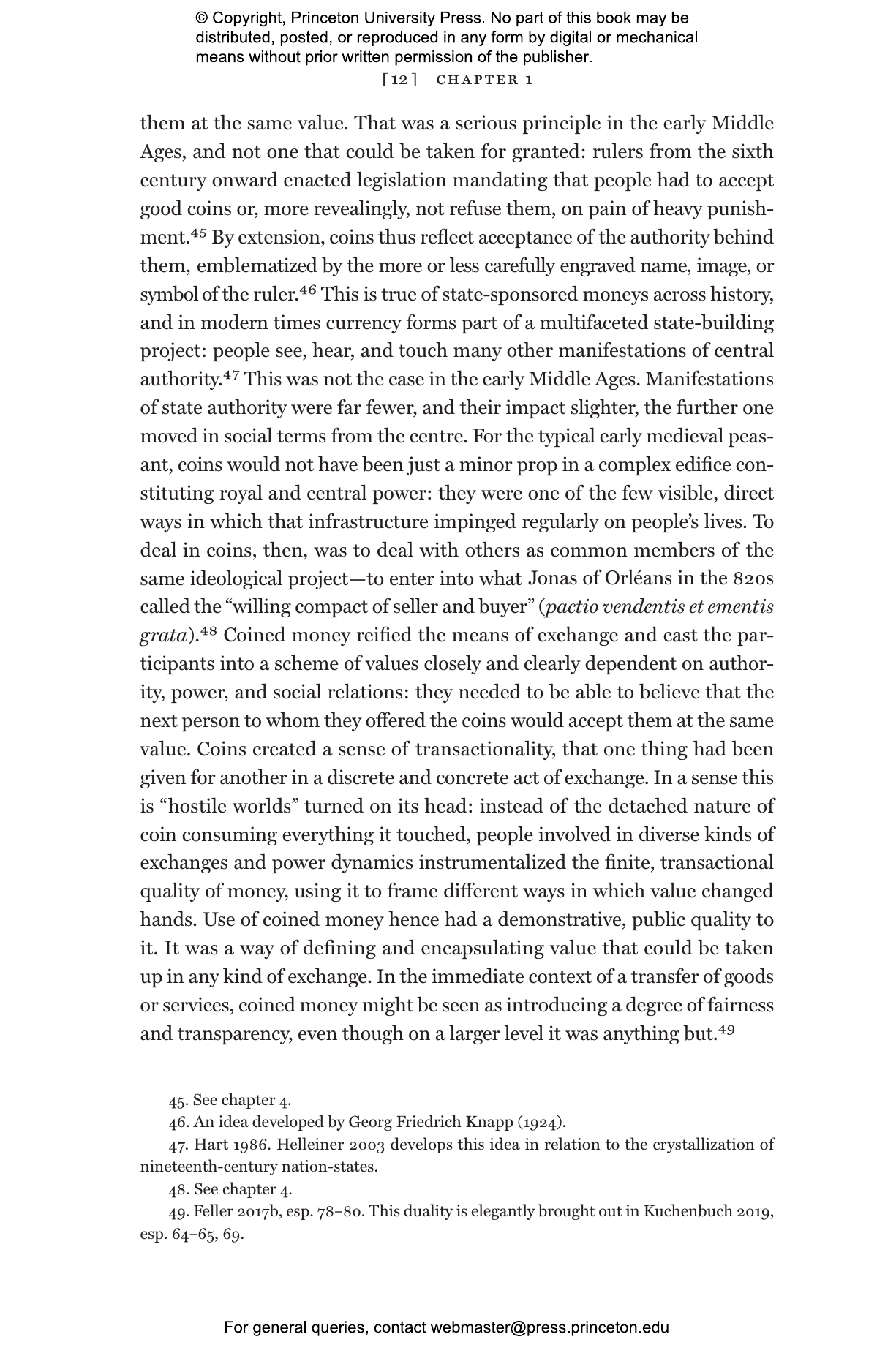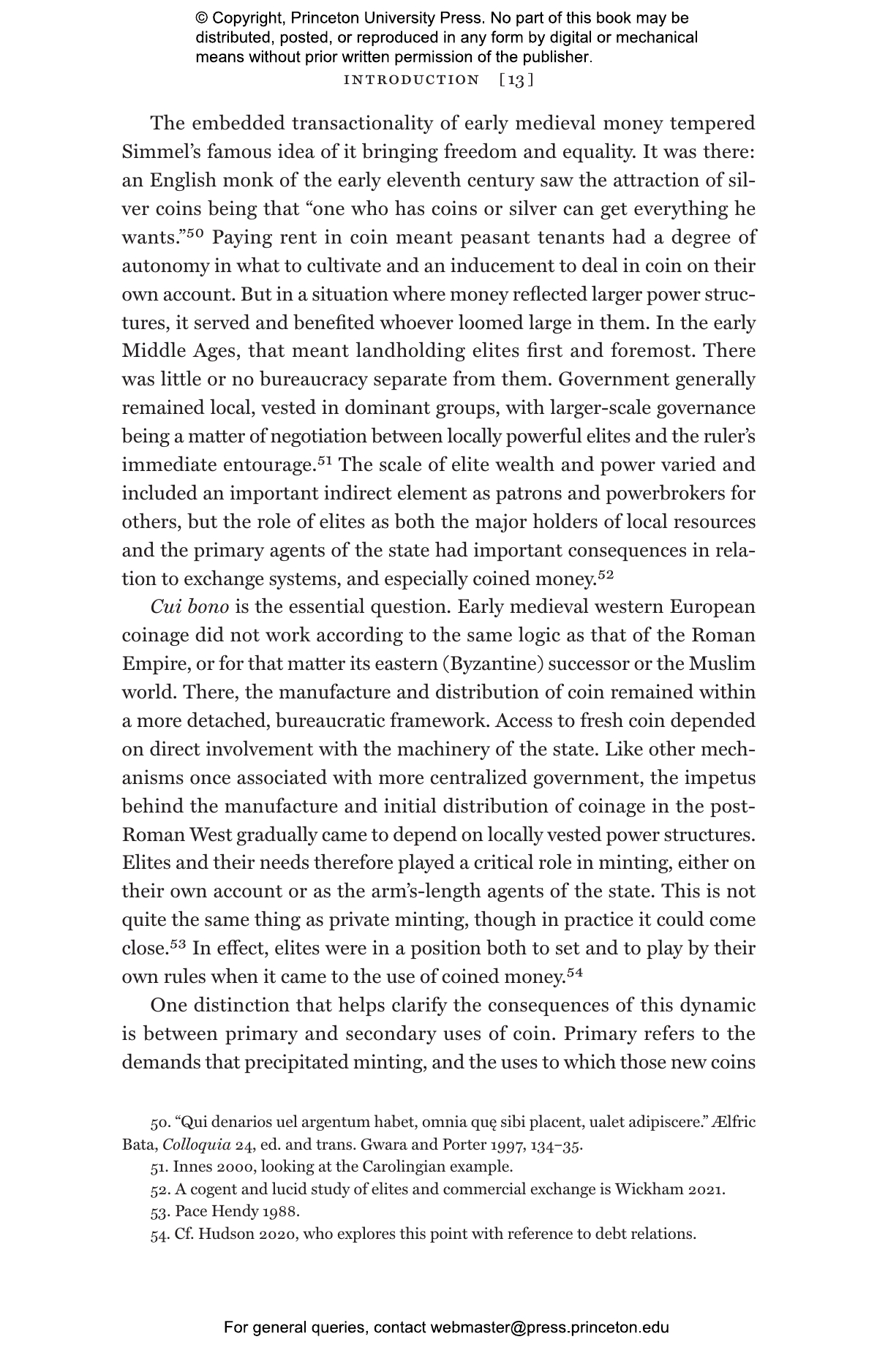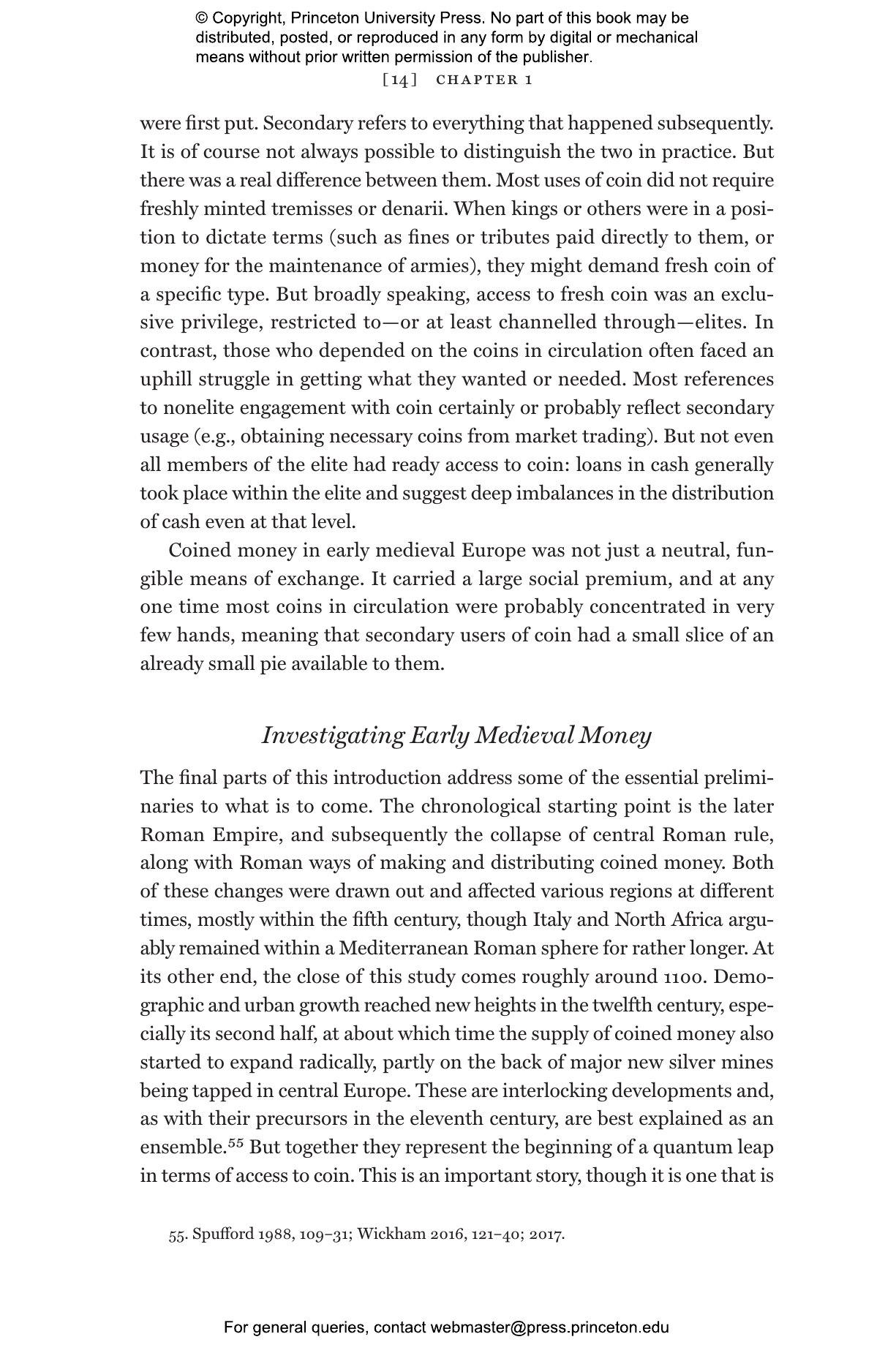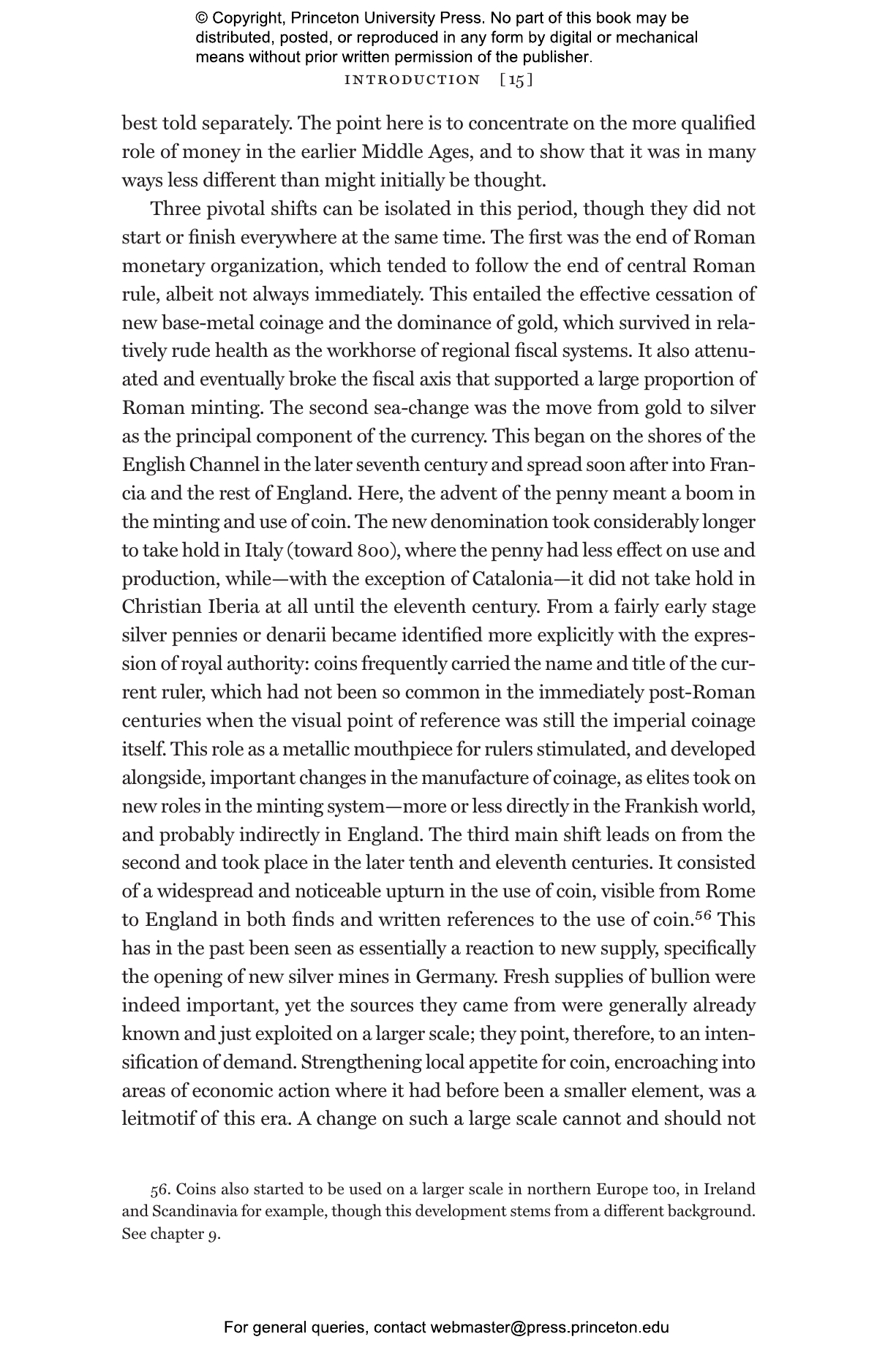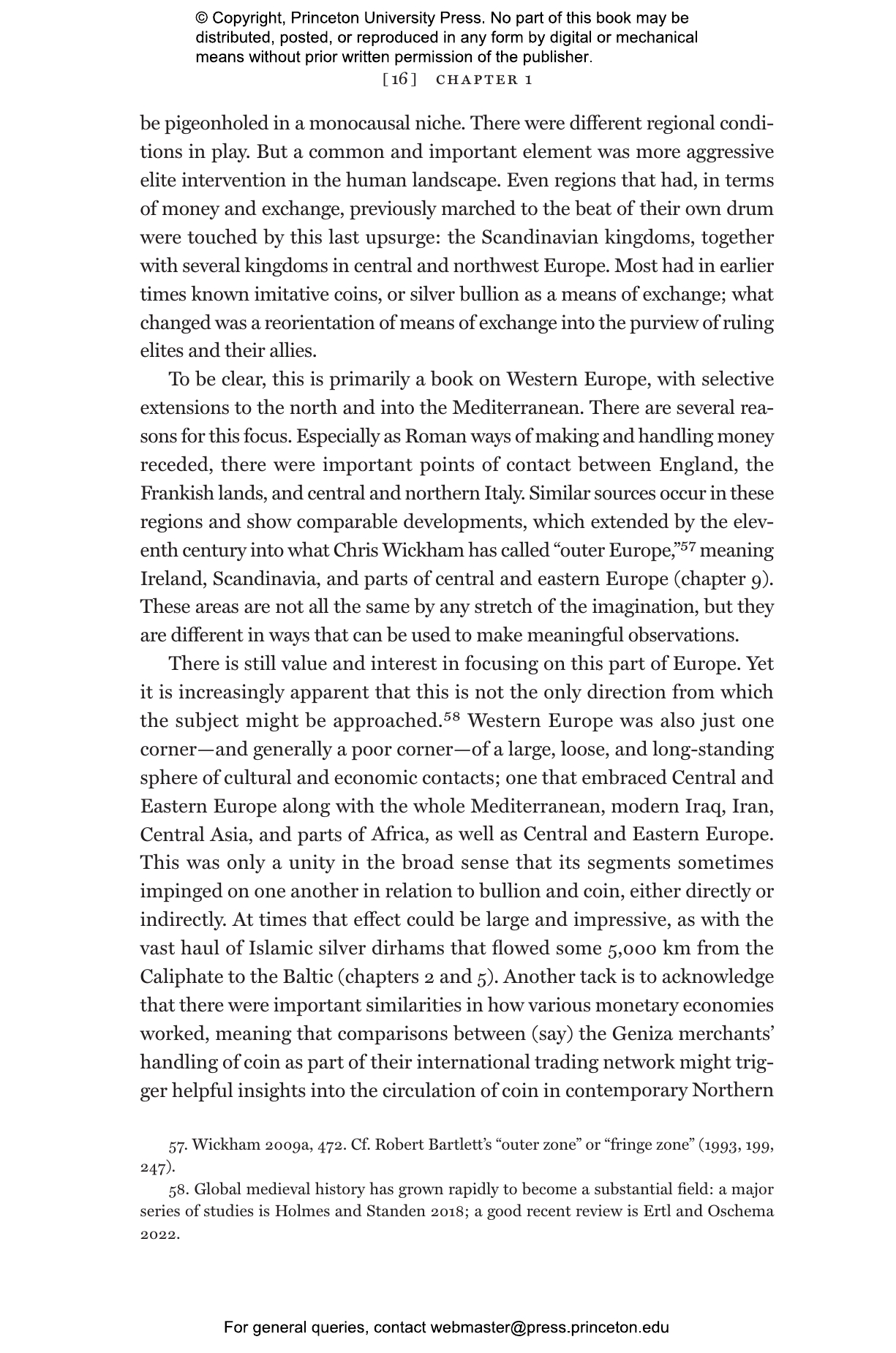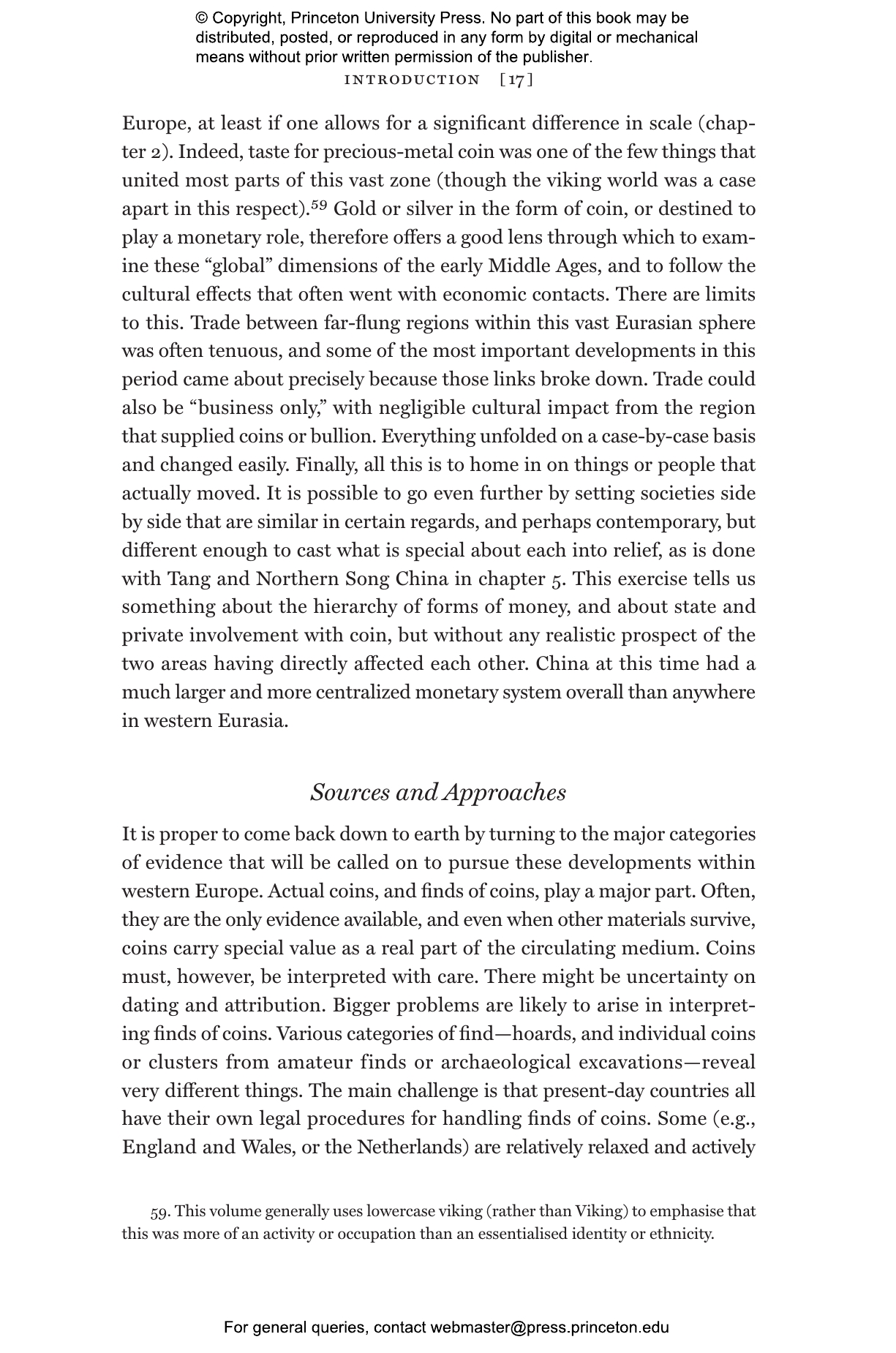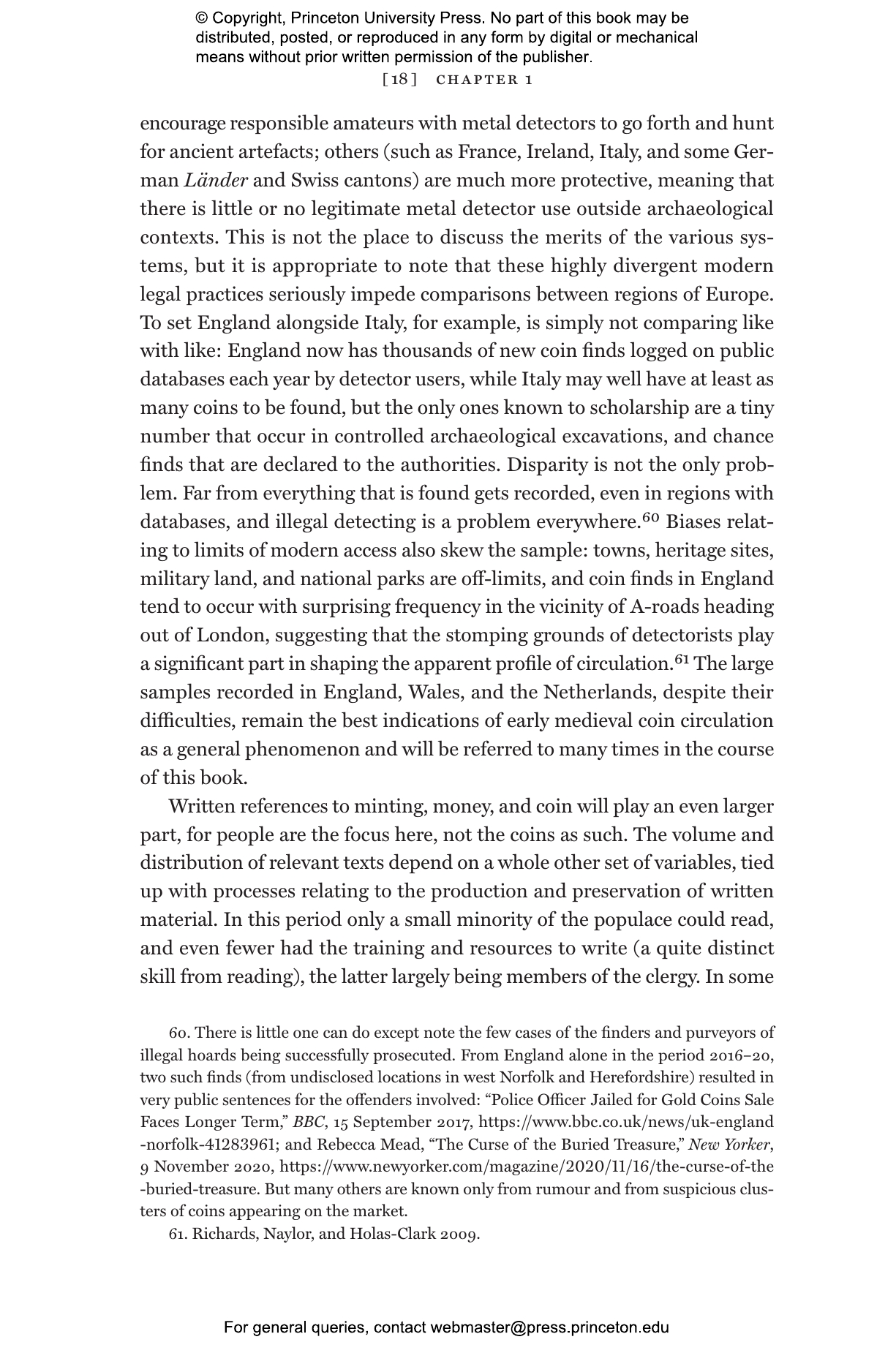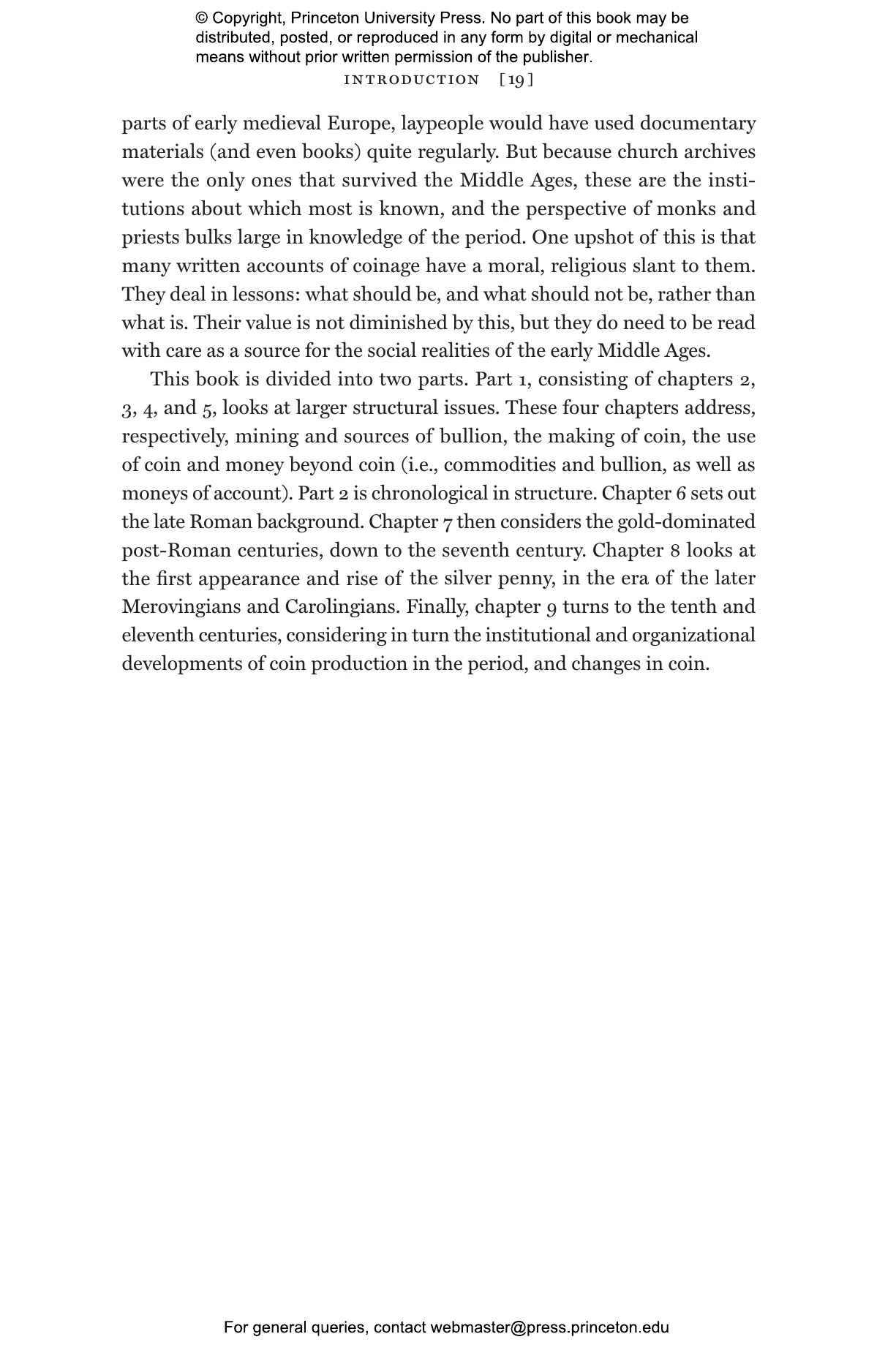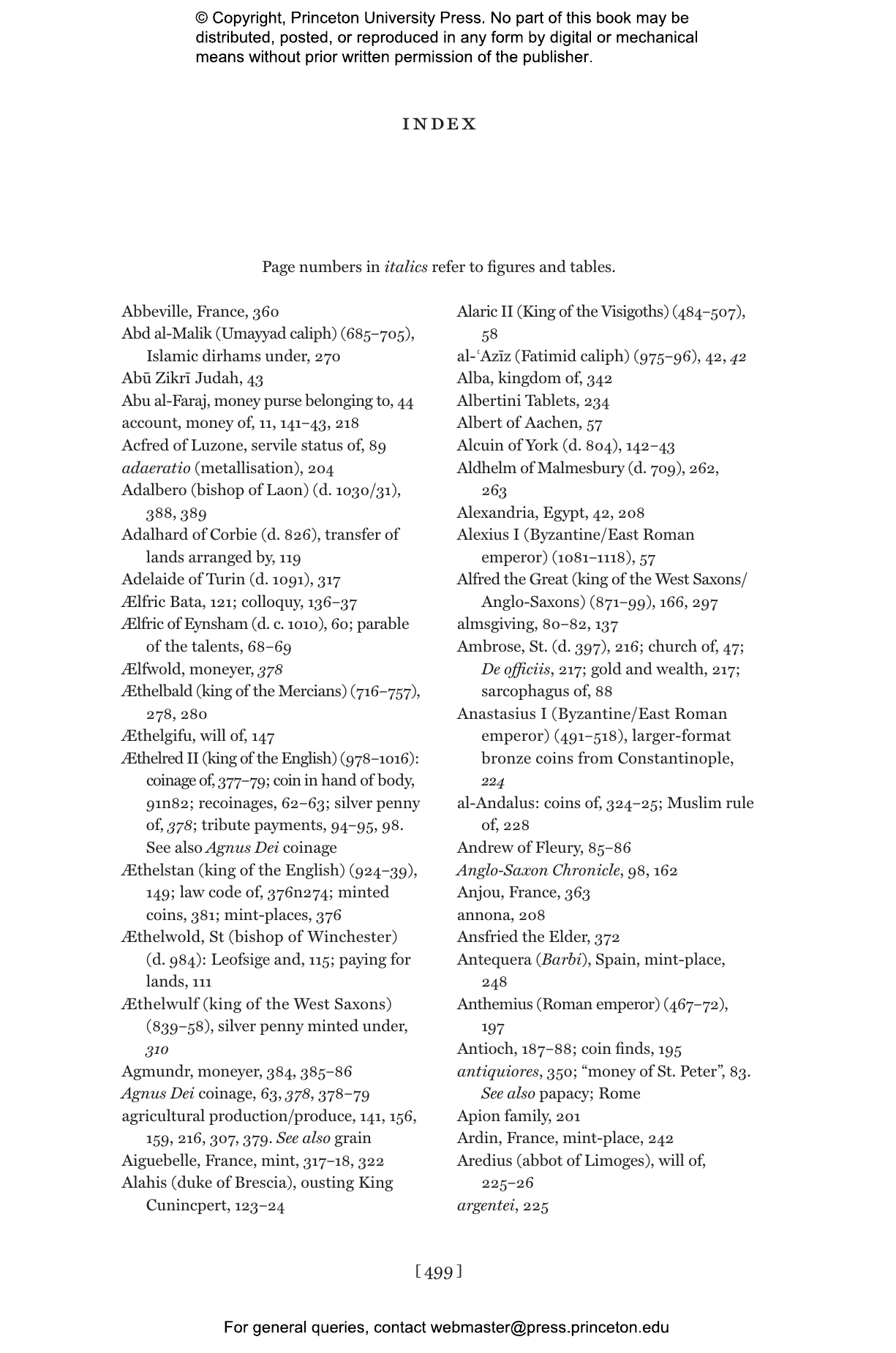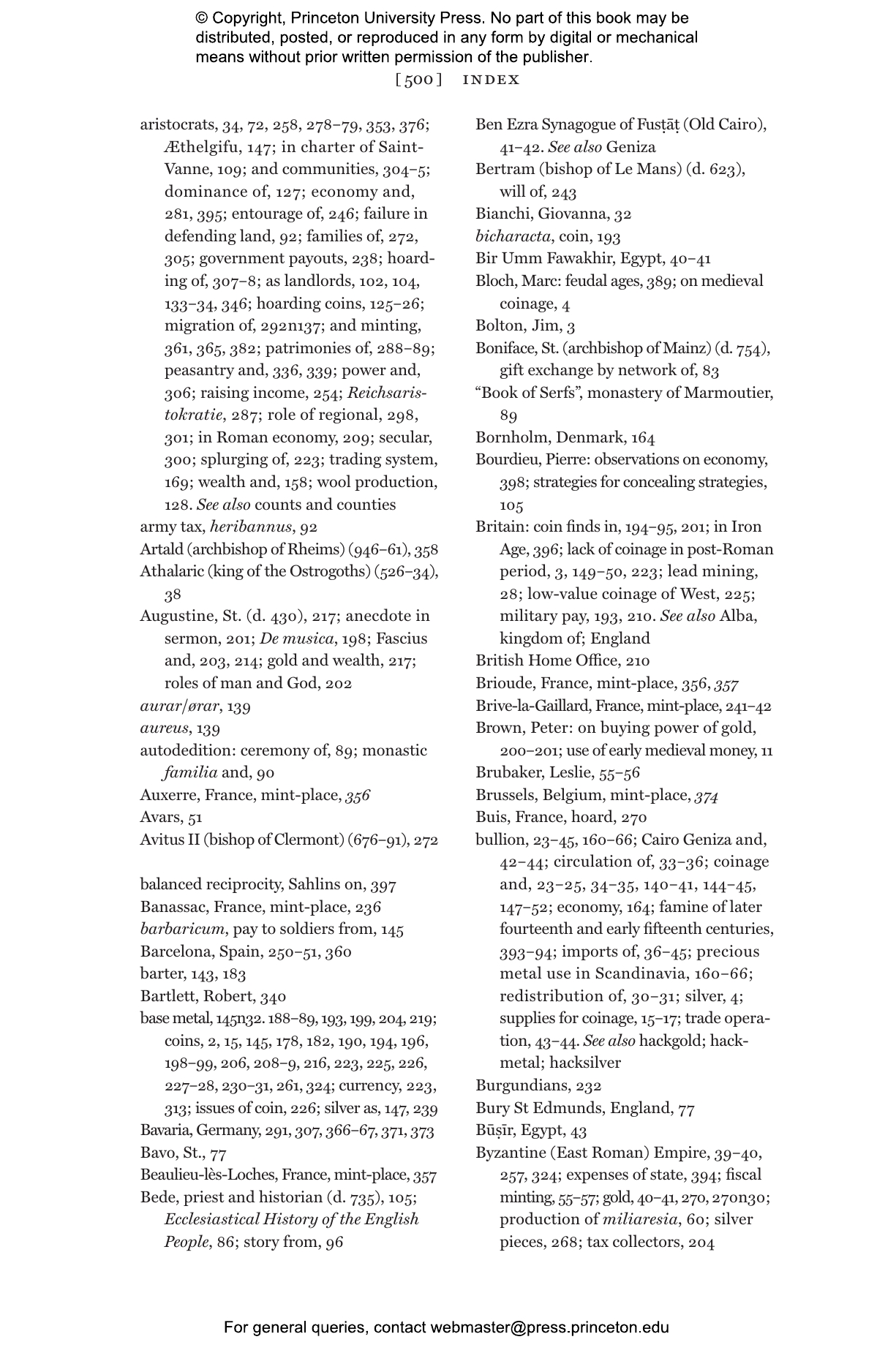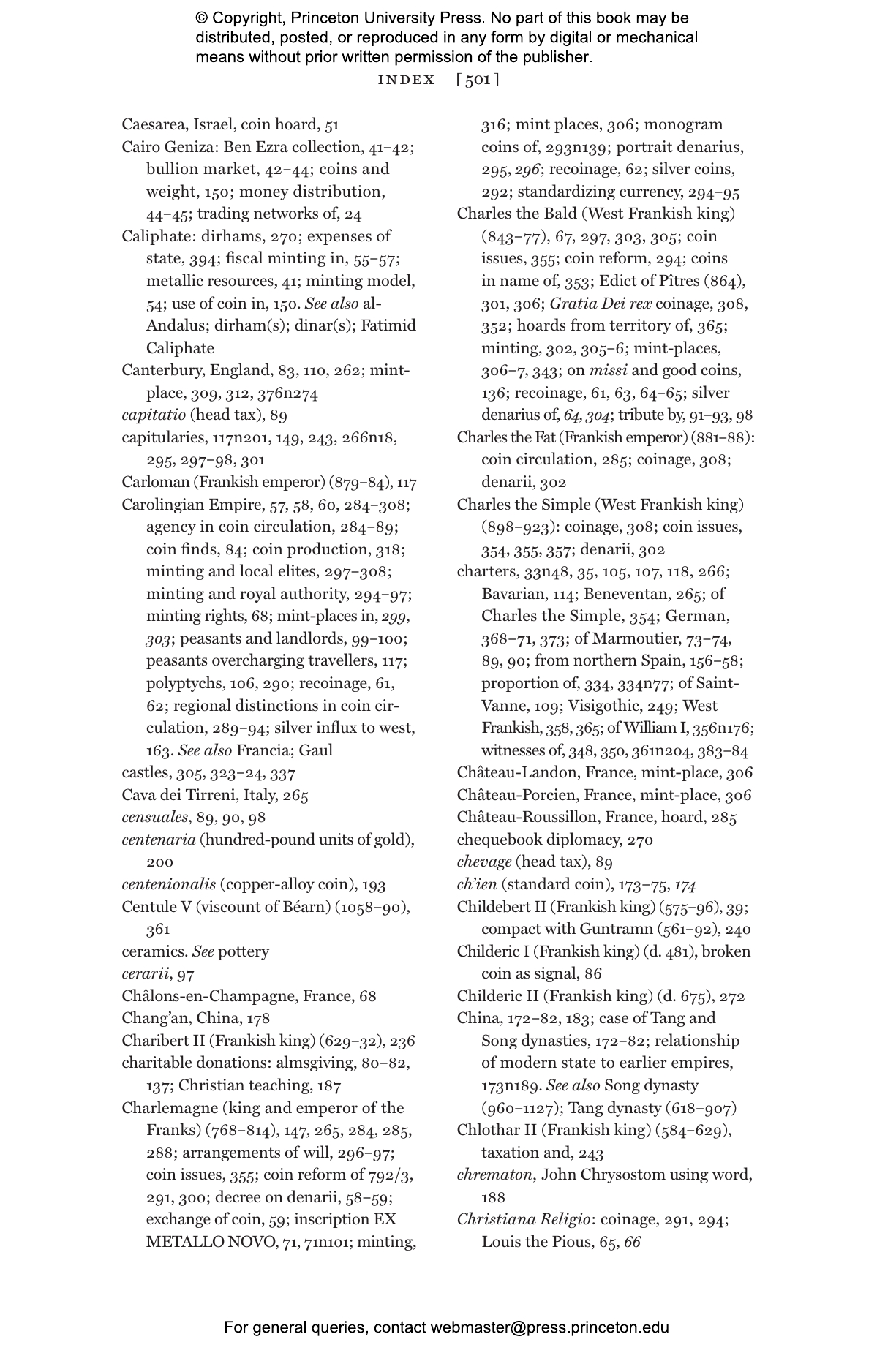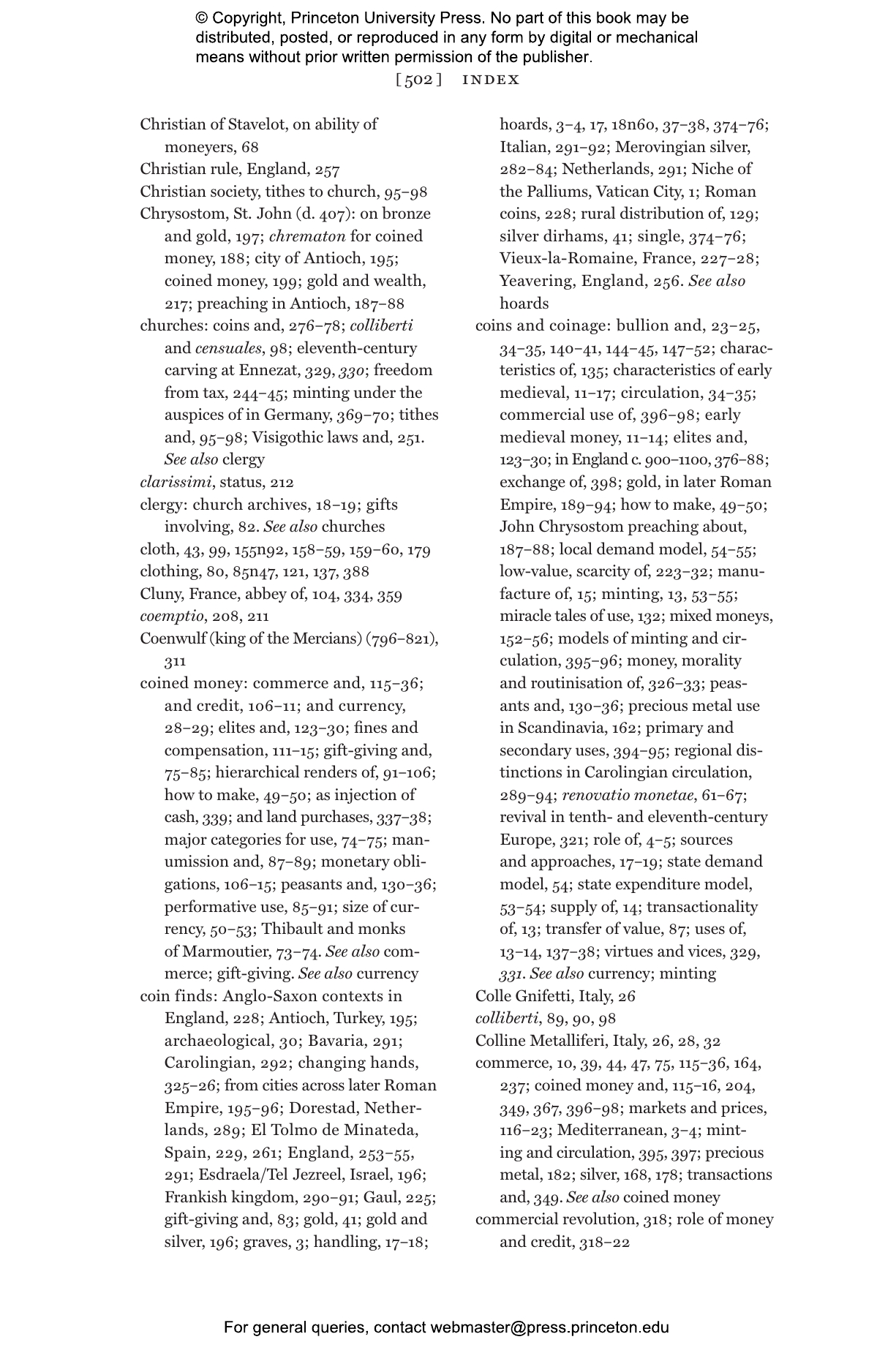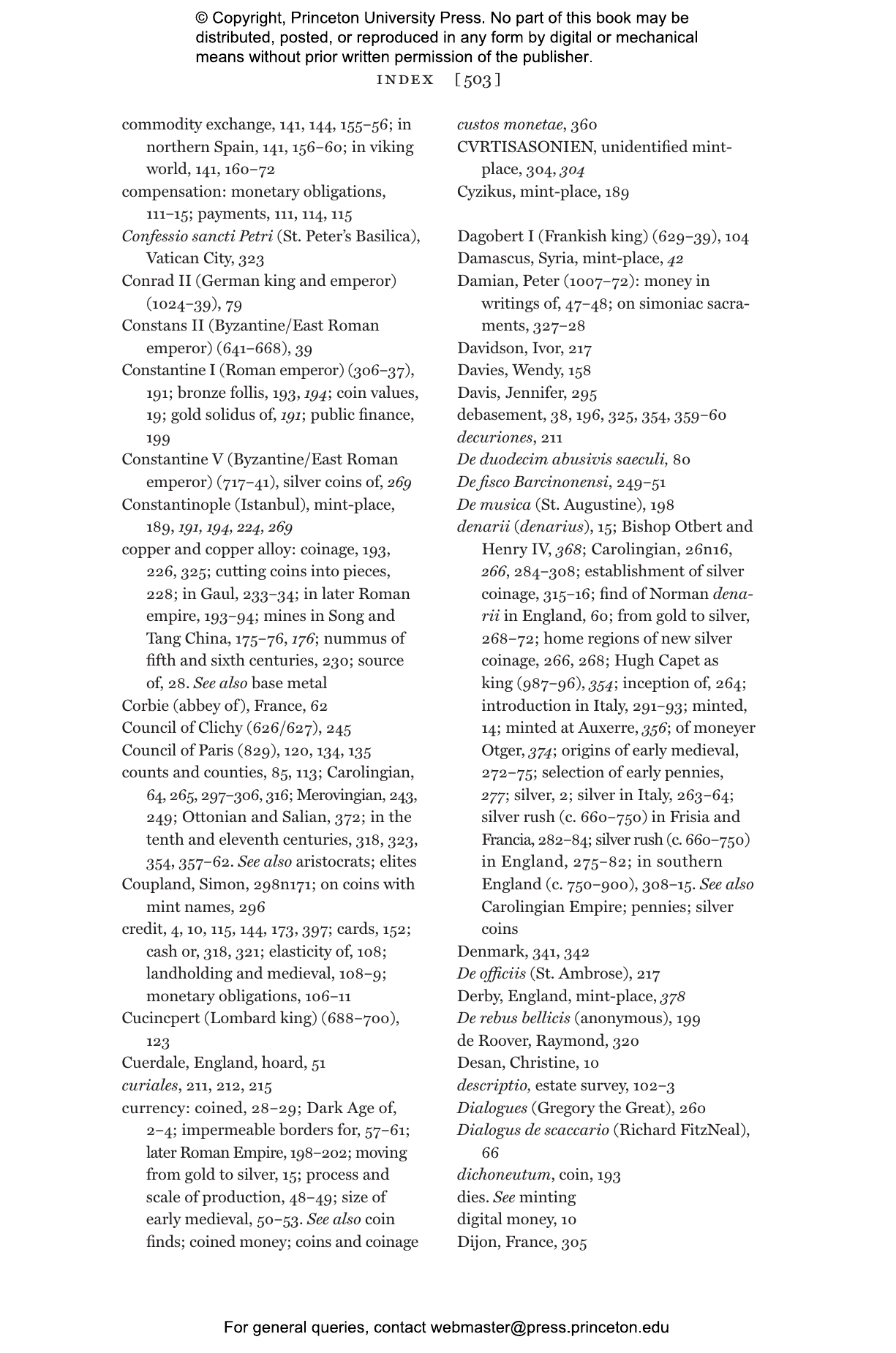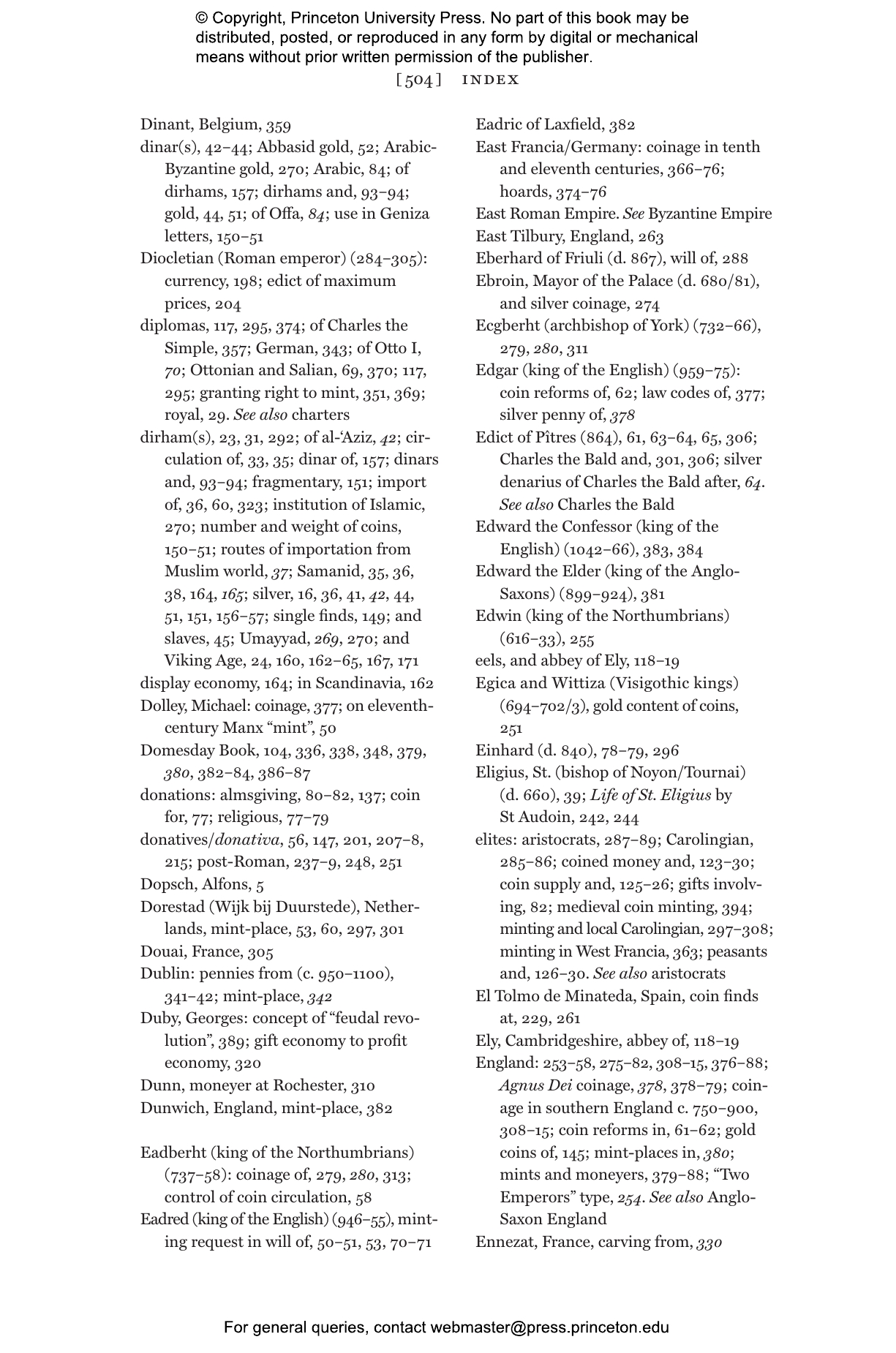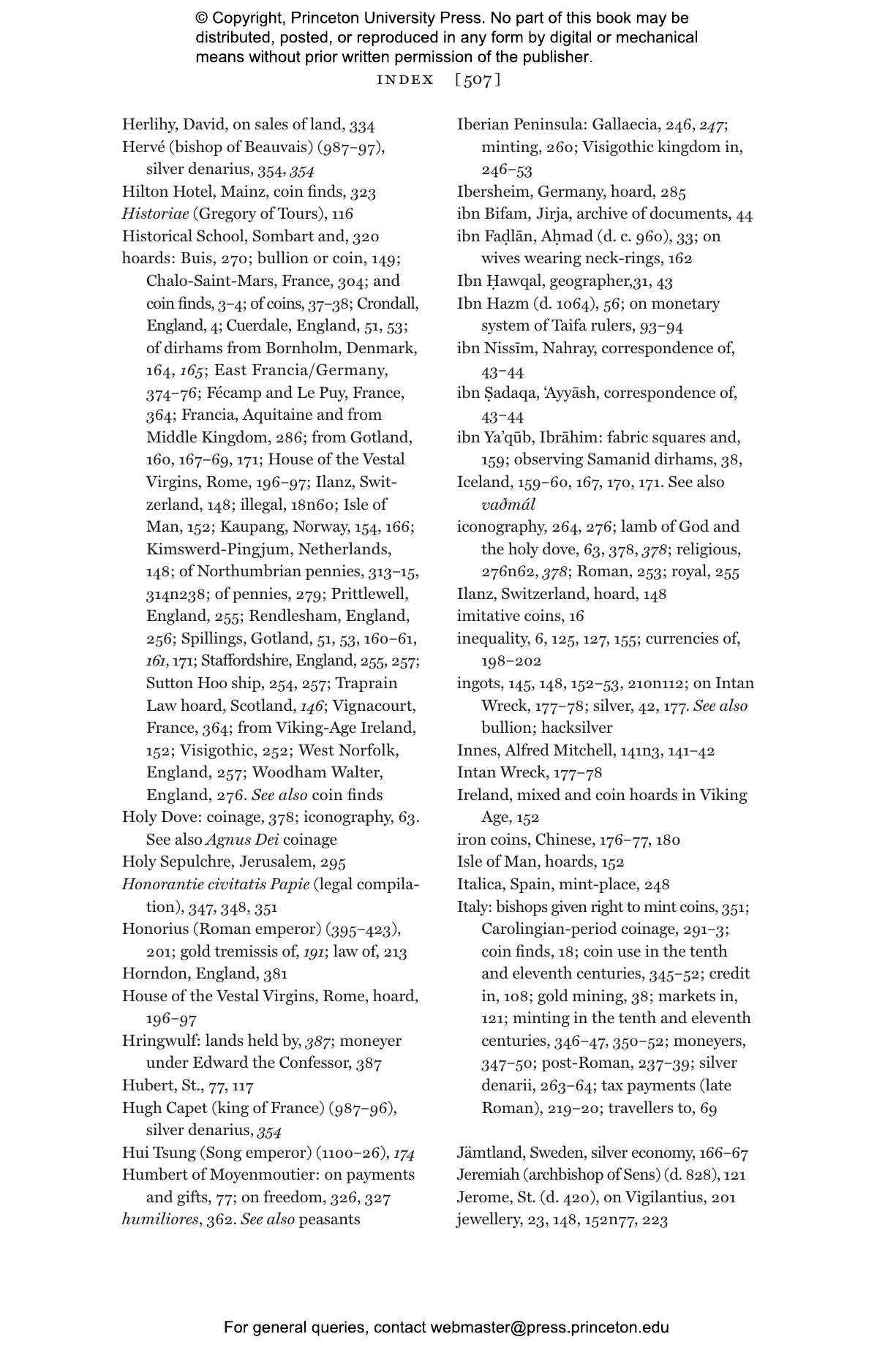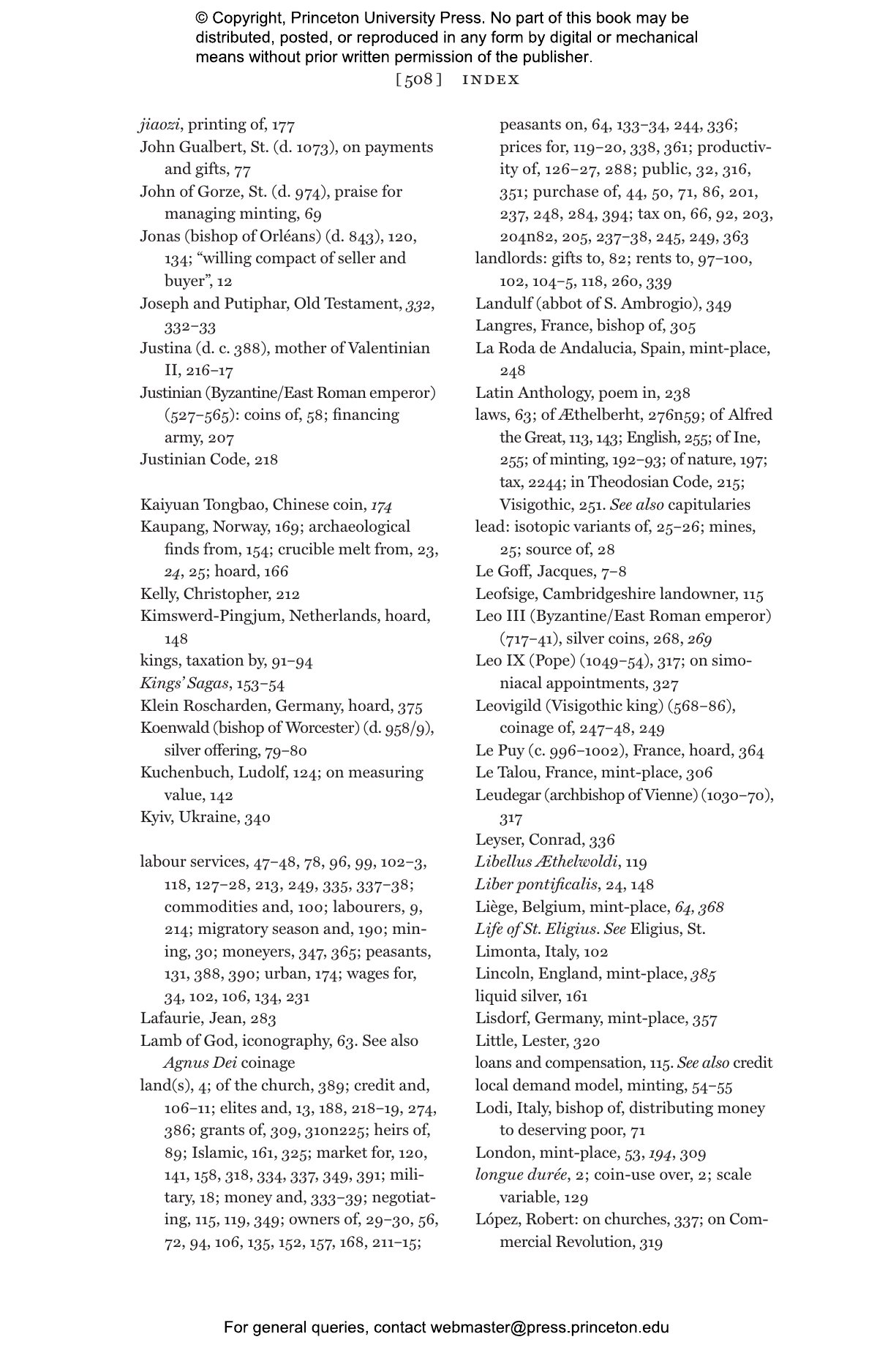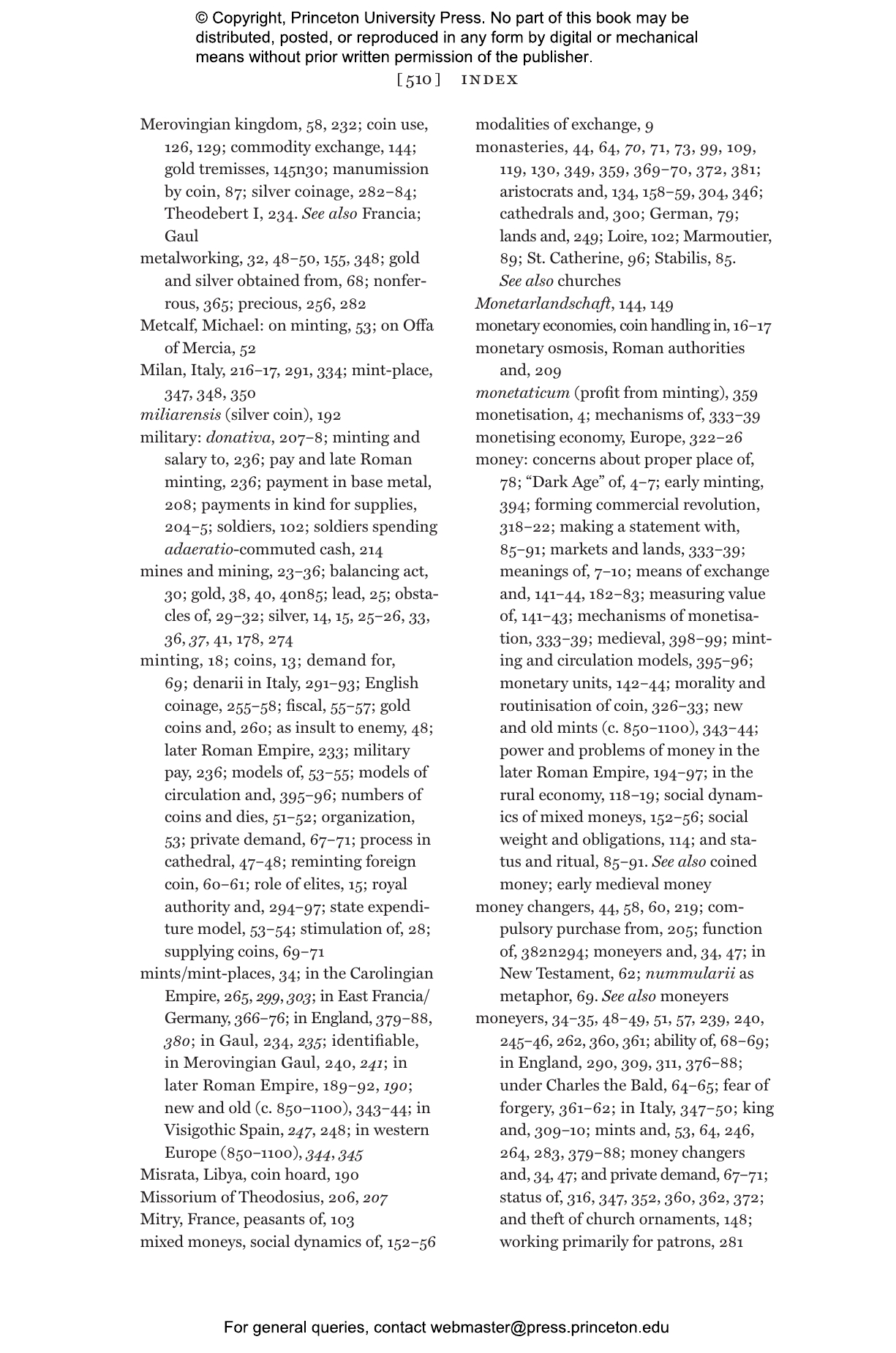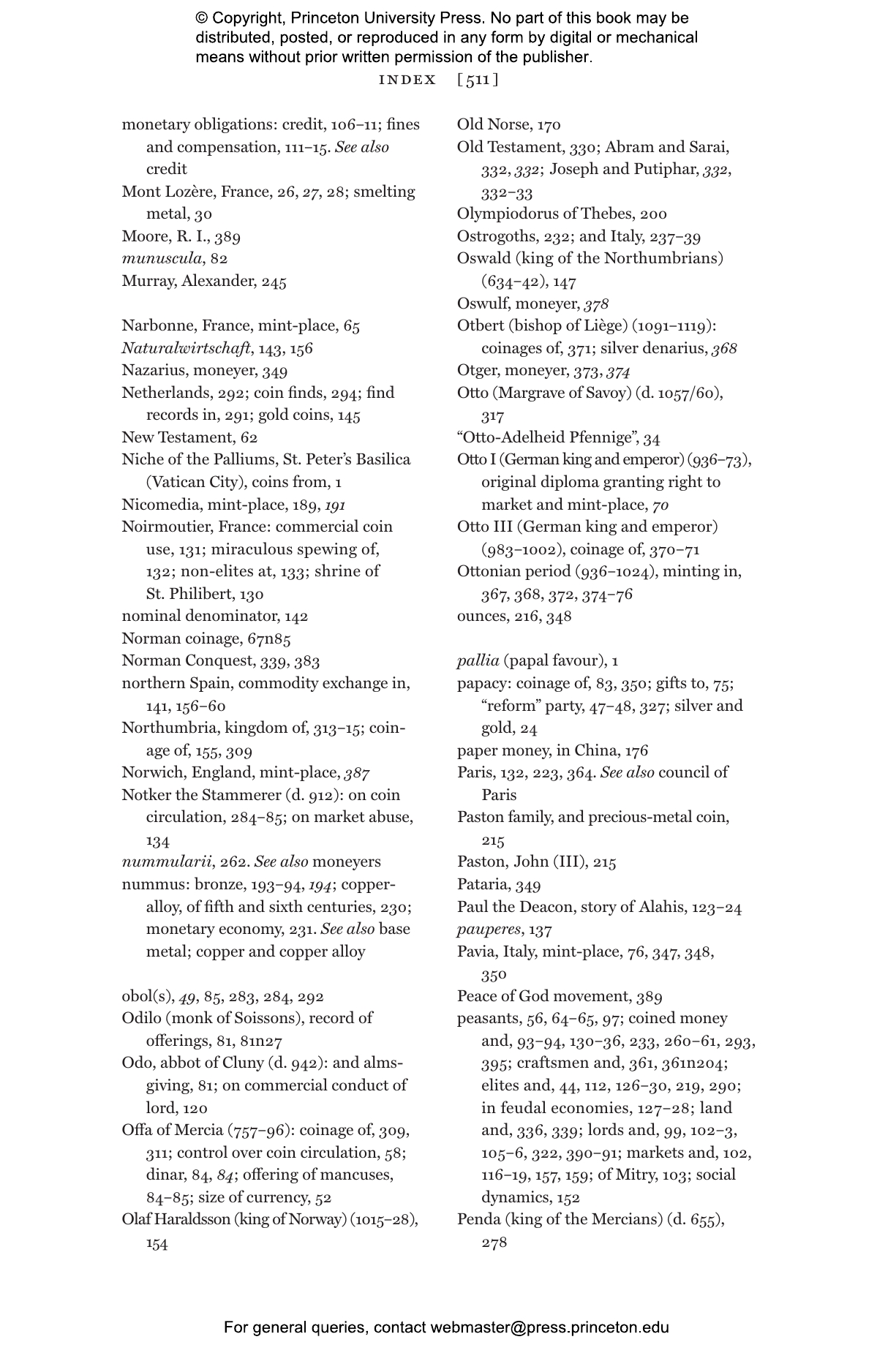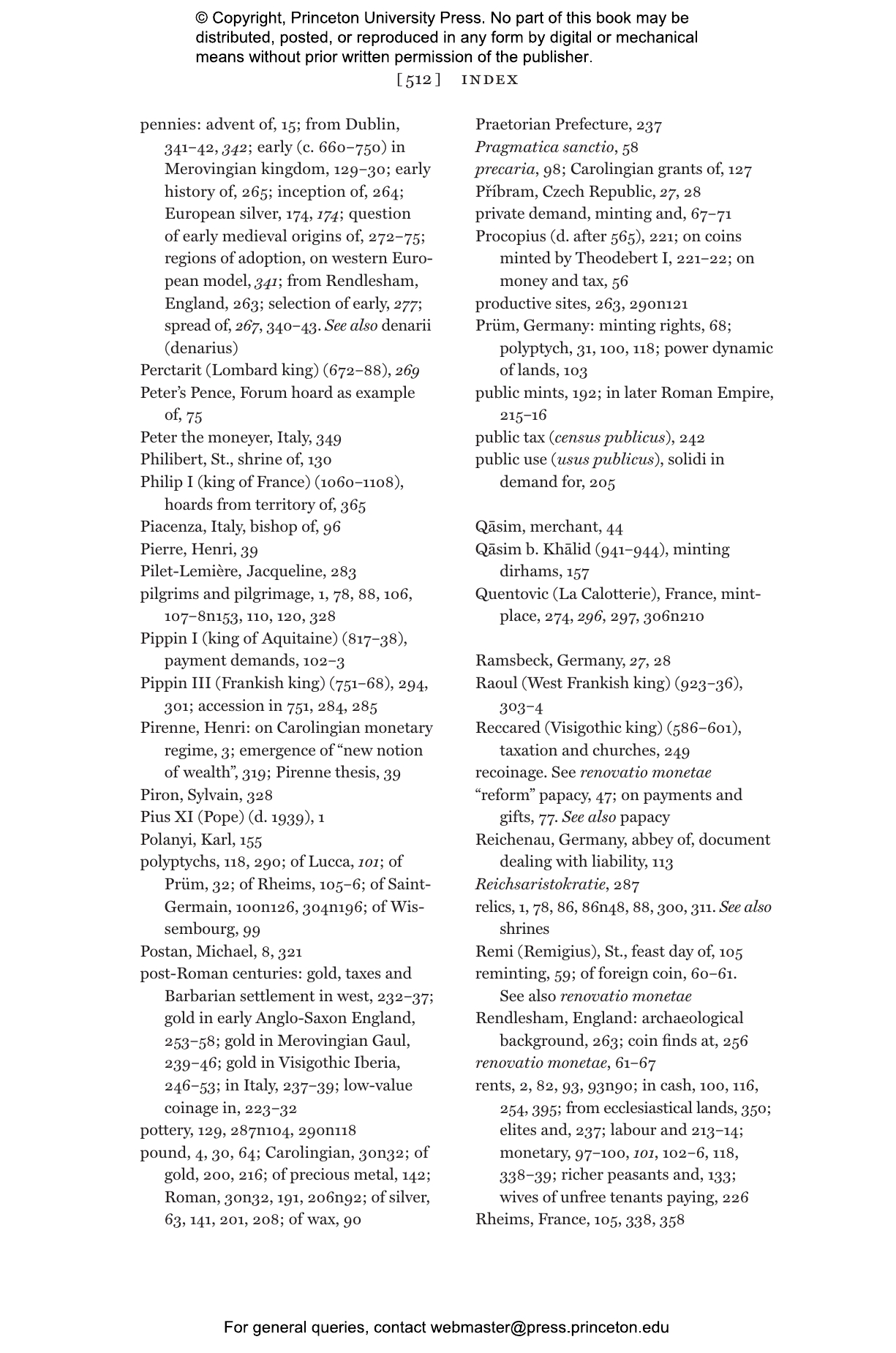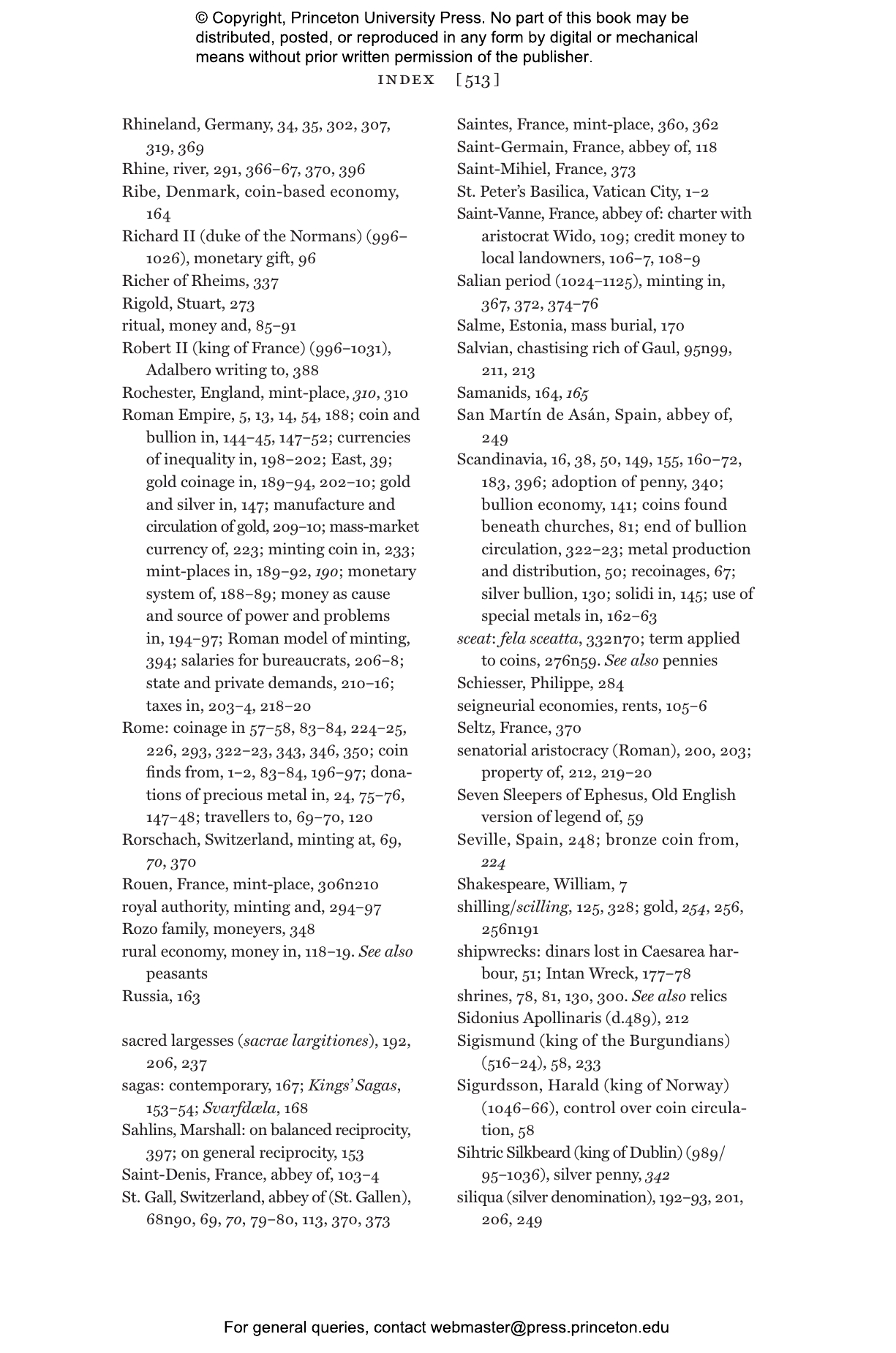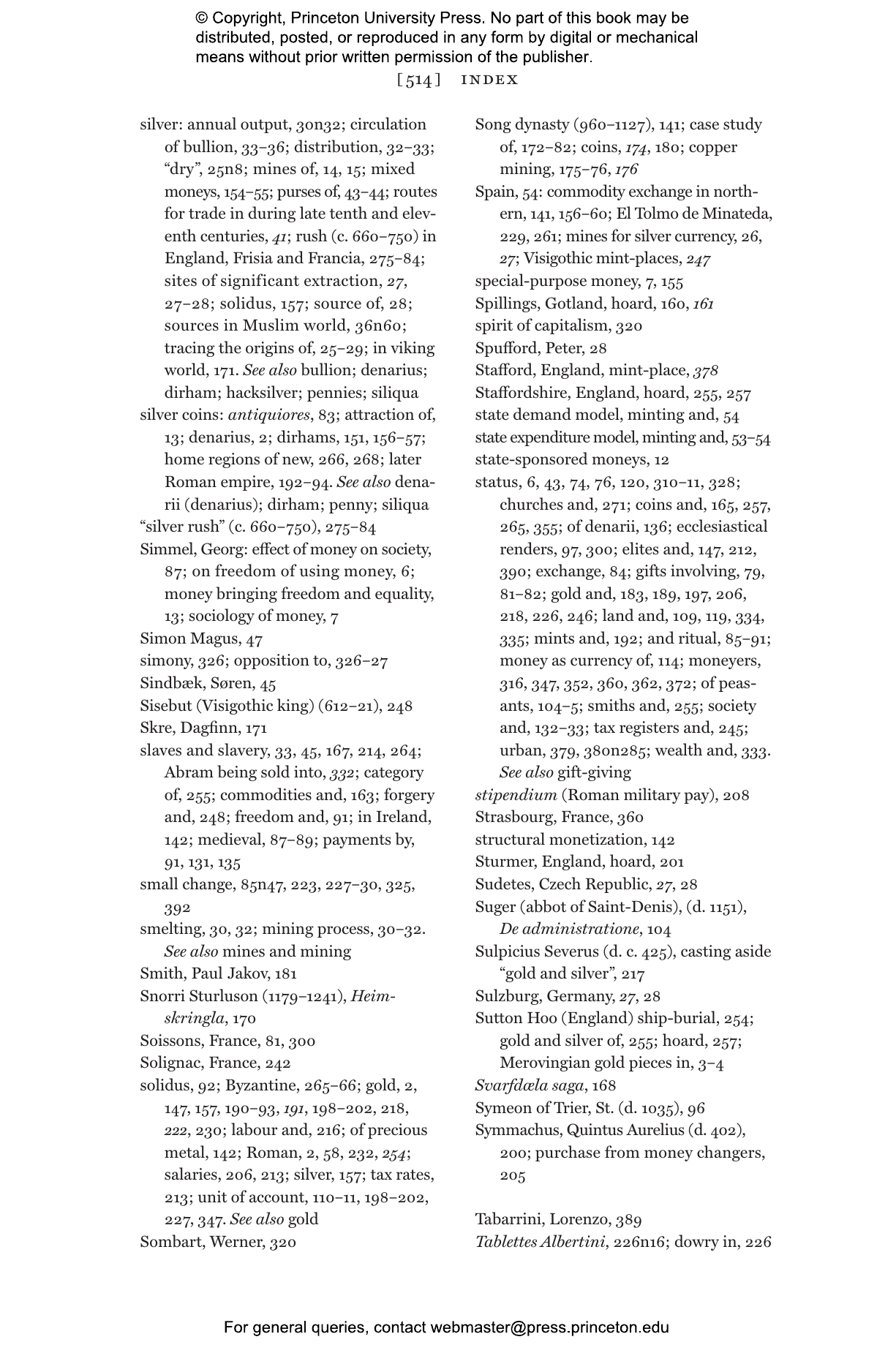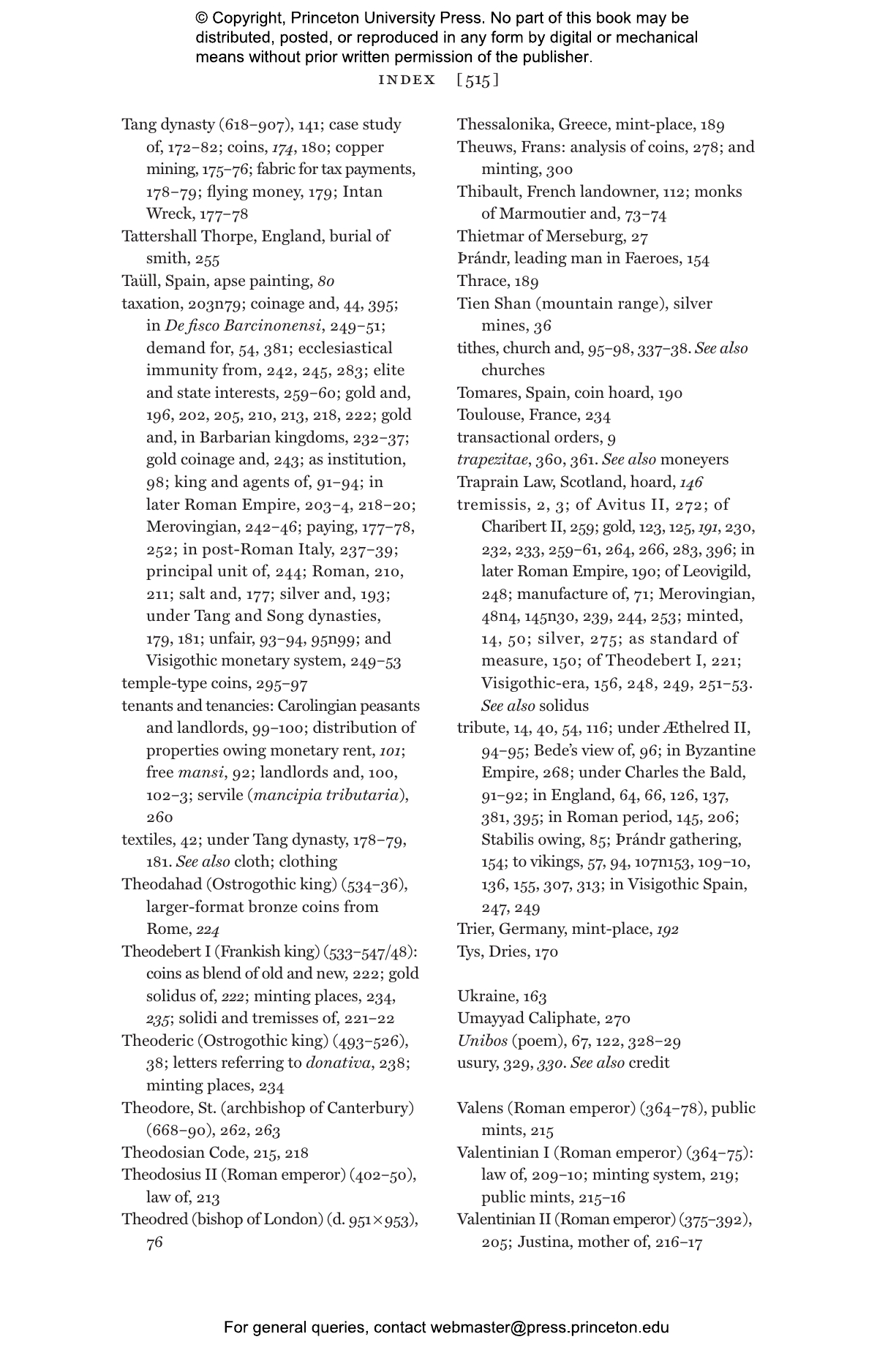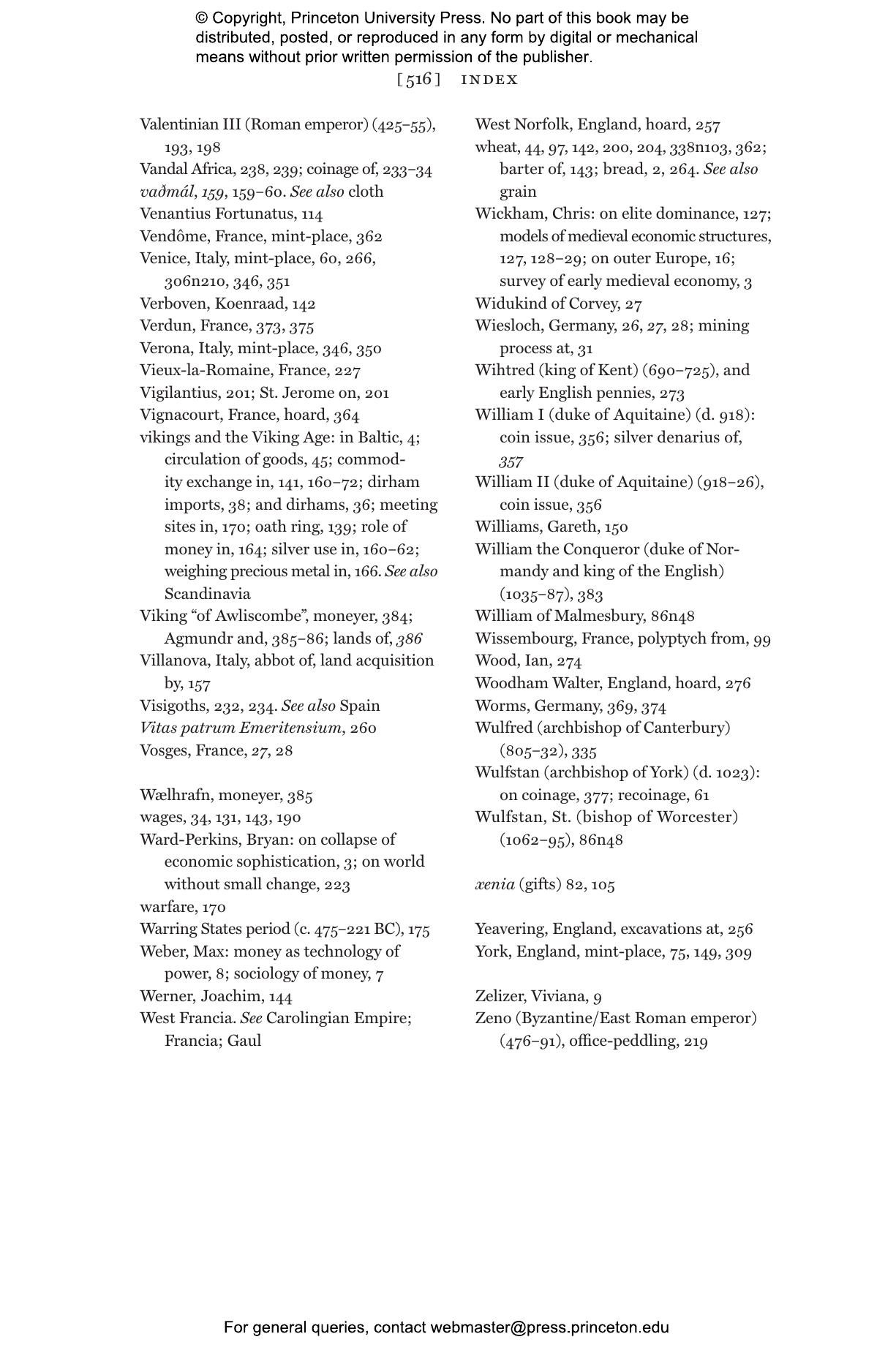Between the end of the Roman Empire in the fifth century and the economic transformations of the twelfth, coined money in western Europe was scarce and high in value, difficult for the majority of the population to make use of. And yet, as Rory Naismith shows in this illuminating study, coined money was made and used throughout early medieval Europe. It was, he argues, a powerful tool for articulating people’s place in economic and social structures and an important gauge for levels of economic complexity. Working from the premise that using coined money carried special significance when there was less of it around, Naismith uses detailed case studies from the Mediterranean and northern Europe to propose a new reading of early medieval money as a point of contact between economic, social, and institutional history.
Naismith examines structural issues, including the mining and circulation of metal and the use of bullion and other commodities as money, and then offers a chronological account of monetary development, discussing the post-Roman period of gold coinage, the rise of the silver penny in the seventh century and the reconfiguration of elite power in relation to coinage in the tenth and eleventh centuries. In the process, he counters the conventional view of early medieval currency as the domain only of elite gift-givers and intrepid long-distance traders. Even when there were few coins in circulation, Naismith argues, the ways they were used—to give gifts, to pay rents, to spend at markets—have much to tell us.
Awards and Recognition
- A Choice Outstanding Academic Title of the Year
Rory Naismith is professor of early medieval English history at the University of Cambridge and a fellow of Corpus Christi College. He is the author of Early Medieval Britain, c. 500–1000, Citadel of the Saxons: The Rise of Early London, and Money and Power in Anglo-Saxon England: The Southern English Kingdoms, 757–865.
"Piecing together case studies from the Mediterranean and northern Europe, as well as looking at mining, metal production and alternative forms of currency, this is a rich account of early English numismatic history."—Spear’s
"Making Money in the Early Middle Ages provides a broad portrait of daily life through the lens of currency in the ninth century that makes the book a worthwhile read."—Ryne Clos, Spectrum Culture
"Clearly written and boasts an extensive bibliography. Naismith's interpretations modify or supplant many standard views, indicating points that still require additional investigation. This is necessary reading for specialists."—Choice
"A joy to read, in no small part because of Naismith’s vivid prose. . . .If you want to know about people’s little quirks and preoccupations, their appetite for acquisition and the enduring human obsession with wealth, then Making Money in the Early Middle Ages will suit you well."—Mary Hitchman, Times Literary Supplement
“An important and highly original analysis of early medieval commerce, economics, and politics as reflected in minting and coinage—I cannot recommend it strongly enough!”—Levi Roach, University of Exeter
“This book is a seminal work that will be the book for consultation on the making of coin-based money and its uses in the early Middle Ages. It represents a stellar leap forward in our understanding of the roles of early medieval coinage and its place in shaping early medieval economies and their societies from c 500–1100 CE.” —Christopher Loveluck, University of Nottingham
“This important book explores the varied social, political and economic significances of money, coin and coinage from the late Roman world to the turn of the millennium. Its sophisticated arguments are lucidly presented and superbly illustrated: students and scholars alike will appreciate its rare combination of deep learning and easy readability.”—Julia Smith, University of Oxford


